- Small dimensions yet practical interior
- Low price of entry
- Wireless smartphone mirroring is a surprise
- Breathless engine in most situations
- Daggy hubcaps show its base model status
- Quite thirsty despite modest outputs
It’s no secret, small SUVs sell extremely well and are popular for many reasons: their compact size makes them easy to park and easy to manoeuvre, while their slight lift in ride height over regular hatchbacks make them easier to see out of. The 2023 Kia Stonic S is the entry-level Kia SUV, and it’s based on the Rio that is sadly no longer produced. We decided to test the entry level Kia Stonic S to see if it is worth the extra spend over a hatchback.
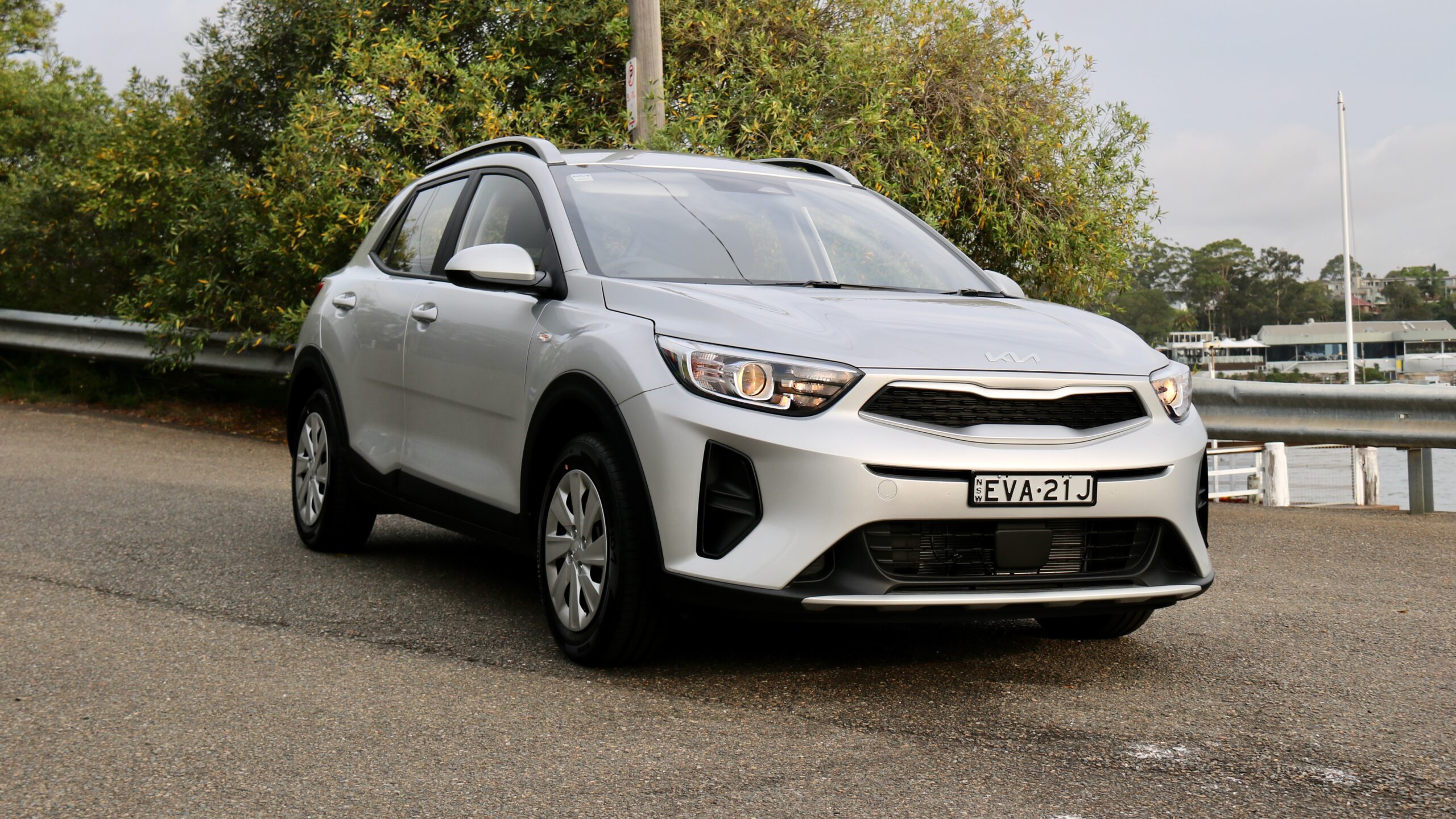
Being a crowded market means there is plenty of cross-shopping to do. Competitors include the Mazda CX-3, Hyundai Venue, Toyota Yaris Cross, Ford Puma, Skoda Kamiq, Renault Captur and the Volkswagen T-Cross. Did we mention there were a few offerings? Let’s see how the Kia stacks up to its competition.
How much does the 2023 Kia Stonic S cost to buy?
The model we have on test here is the 2023 Kia Stonic S, which is the entry level Stonic in Australia. The manual is priced from $22,290 plus on-road costs, while the optional automatic transmission tested here sees the Stonic S priced at $23,790 plus on road costs or around $27,000 drive away.
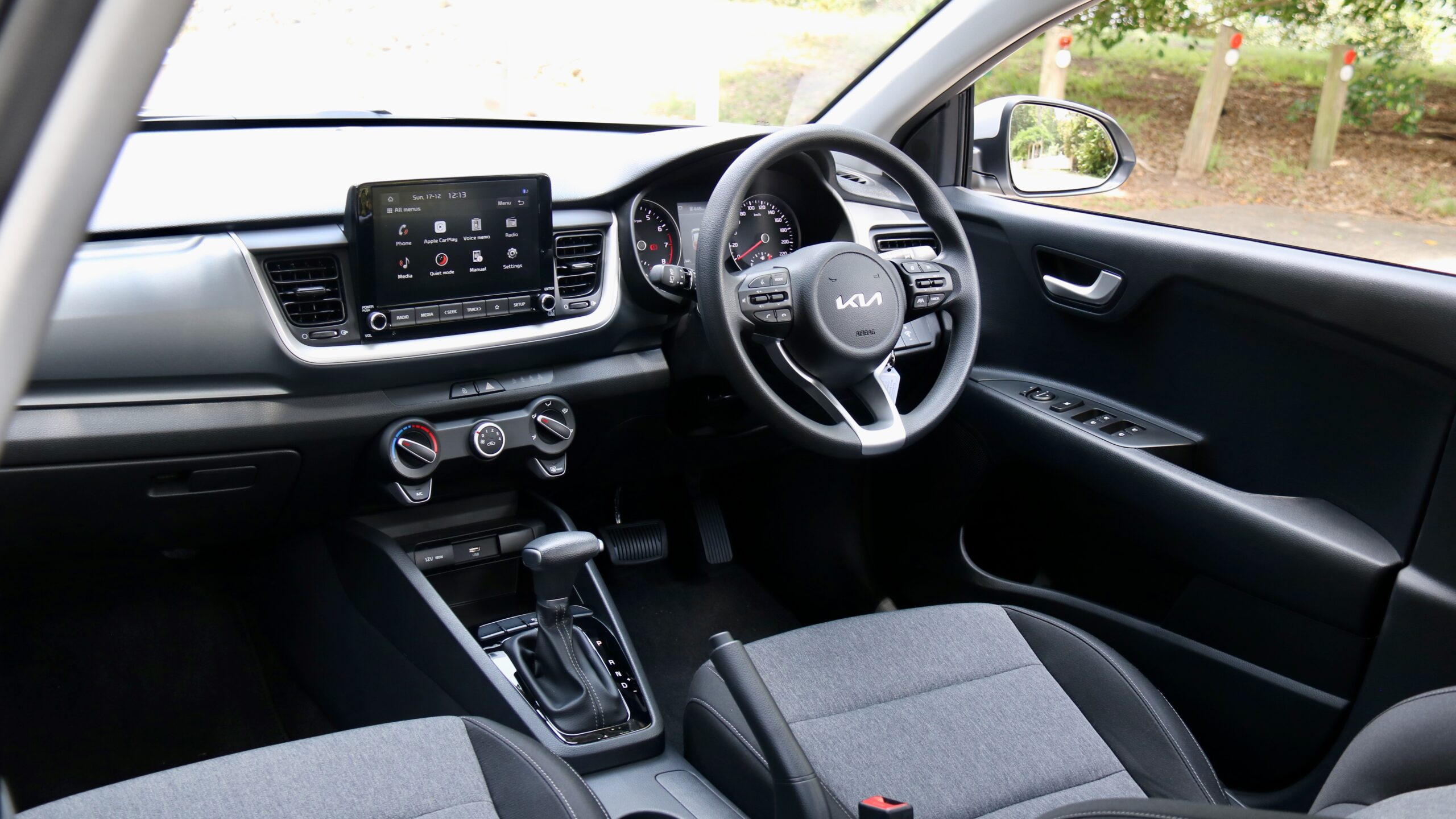
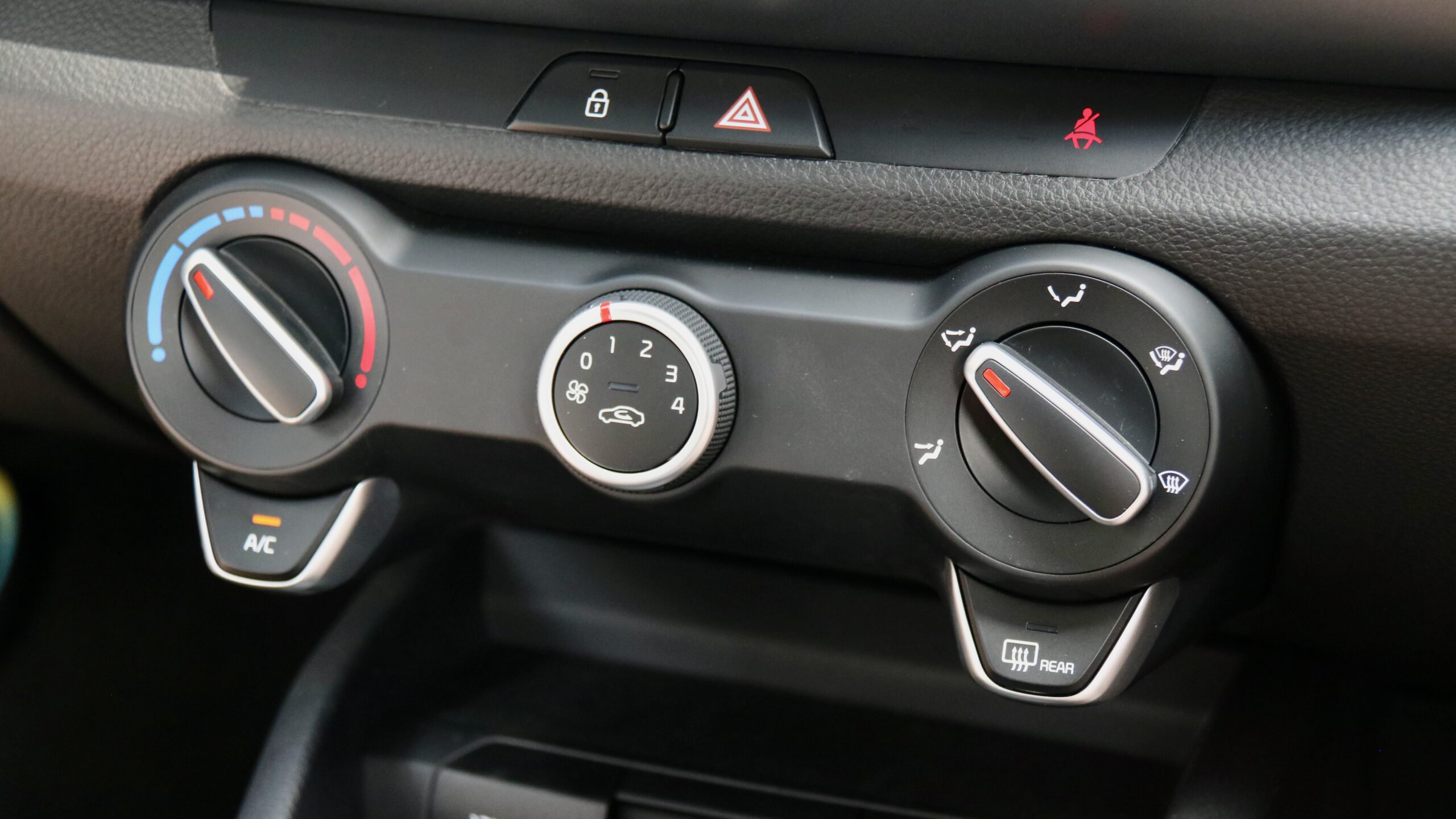
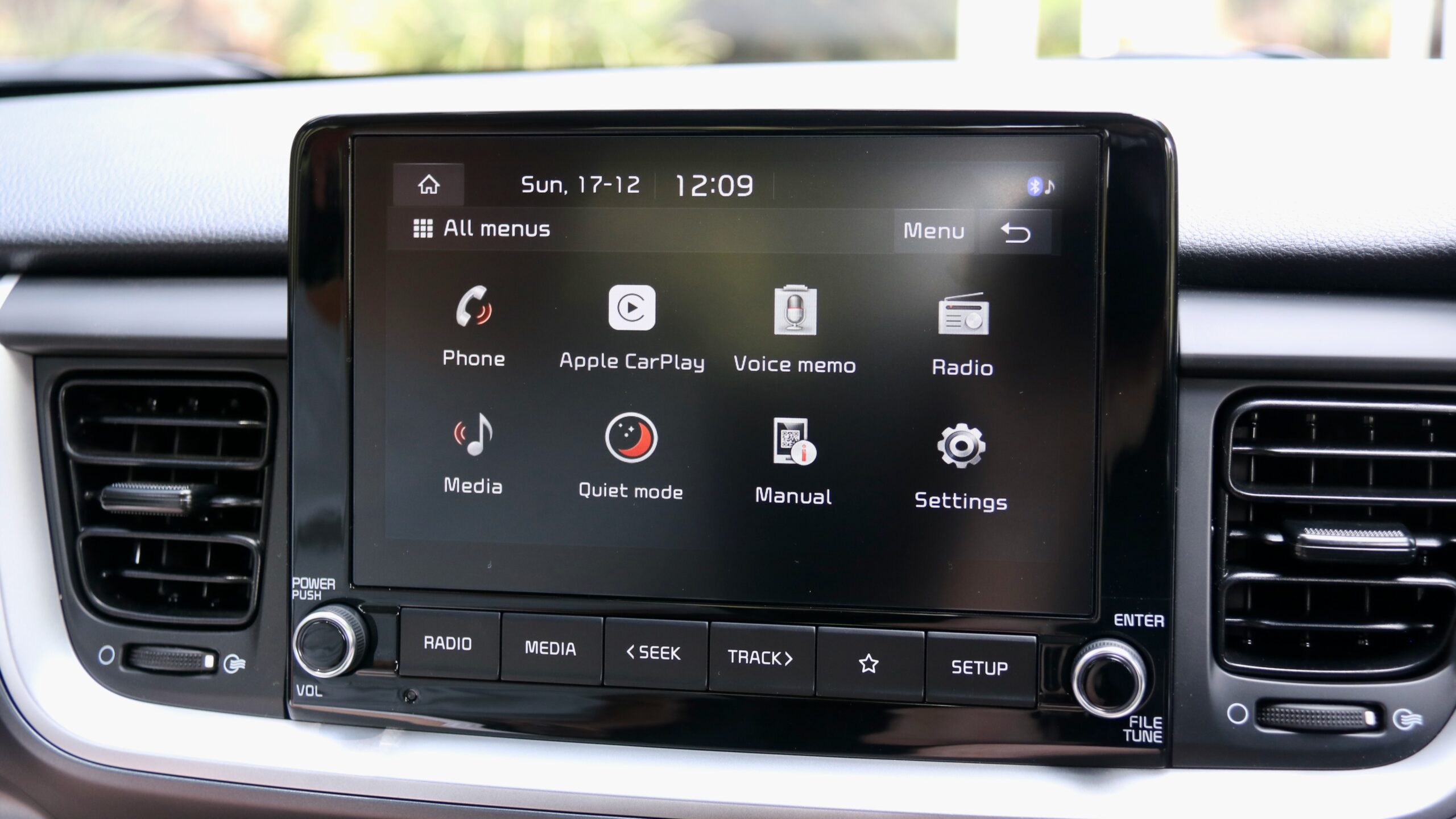
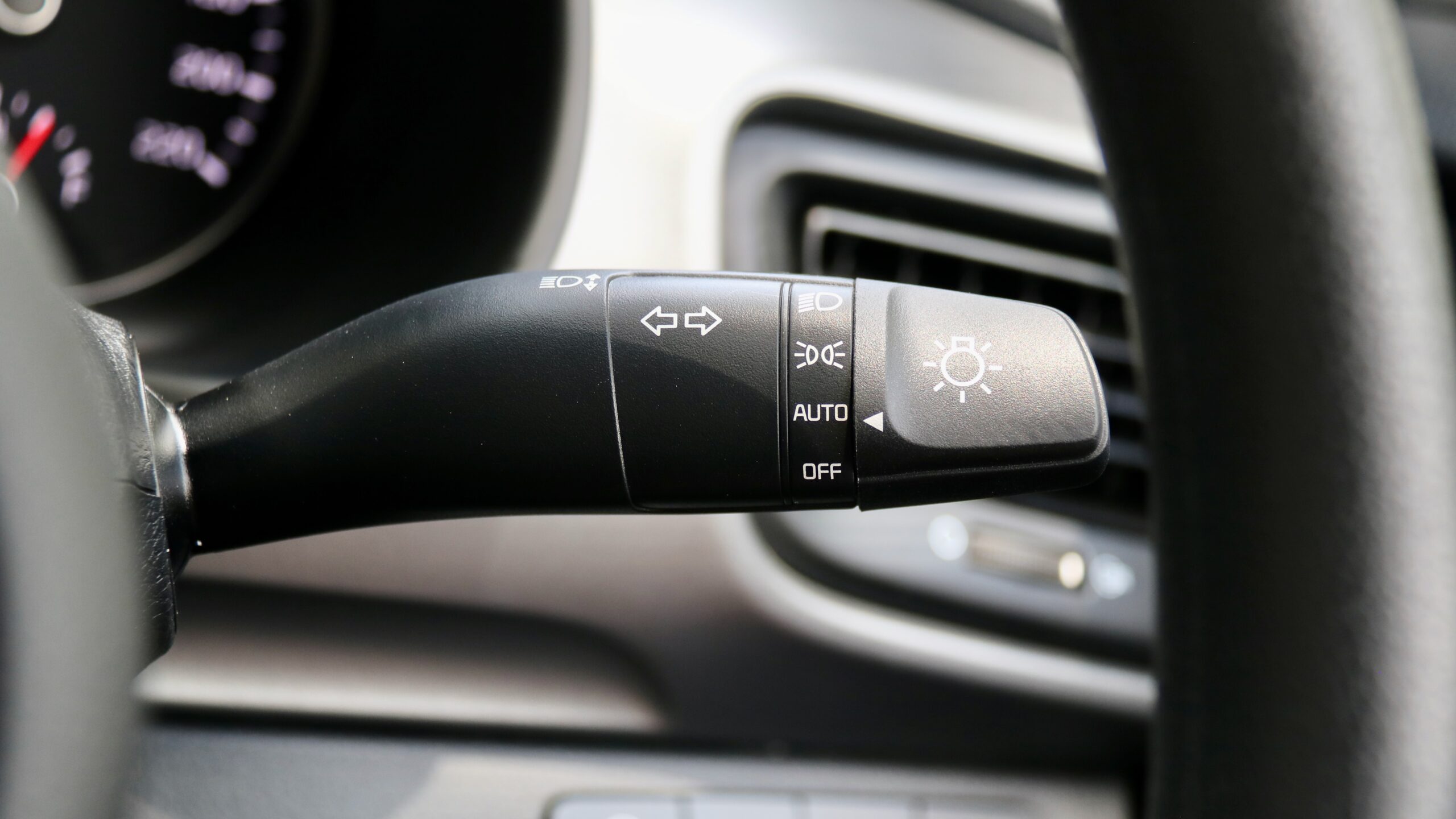
Stonic S standard equipment:
- 15-inch steel wheels and a full-size spare wheel
- Automatic dusk-sensing halogen headlights with halogen daytime running lights
- Intermittent wipers
- Remote keyless entry
- Height adjustable driver’s seat
- Cloth upholstery
- Manual air-conditioning
- Power windows with auto up/down for the driver’s window
- 8.0-inch touchscreen
- Wireless Apple CarPlay and Android Auto
- Bluetooth phone and audio streaming
- Polyurethane steering wheel, gear knob and handbrake
- Six-speaker sound system
- Cruise control with a speed limiter
- One USB-A port
- 12V socket
- Trip computer
- A sunglasses holder
The Stonic received a five-star ANCAP safety rating in 2017 based off the related Rio with a score of 35.52 out of 37 based on older testing protocols. Safety equipment includes:
- Six airbags
- Auto emergency braking (AEB) with pedestrian detection
- Lane departure warning with lane keep assist
- Lane trace assist
- Rear parking sensors
- Reversing camera
- Hill holder
- Driver attention detection
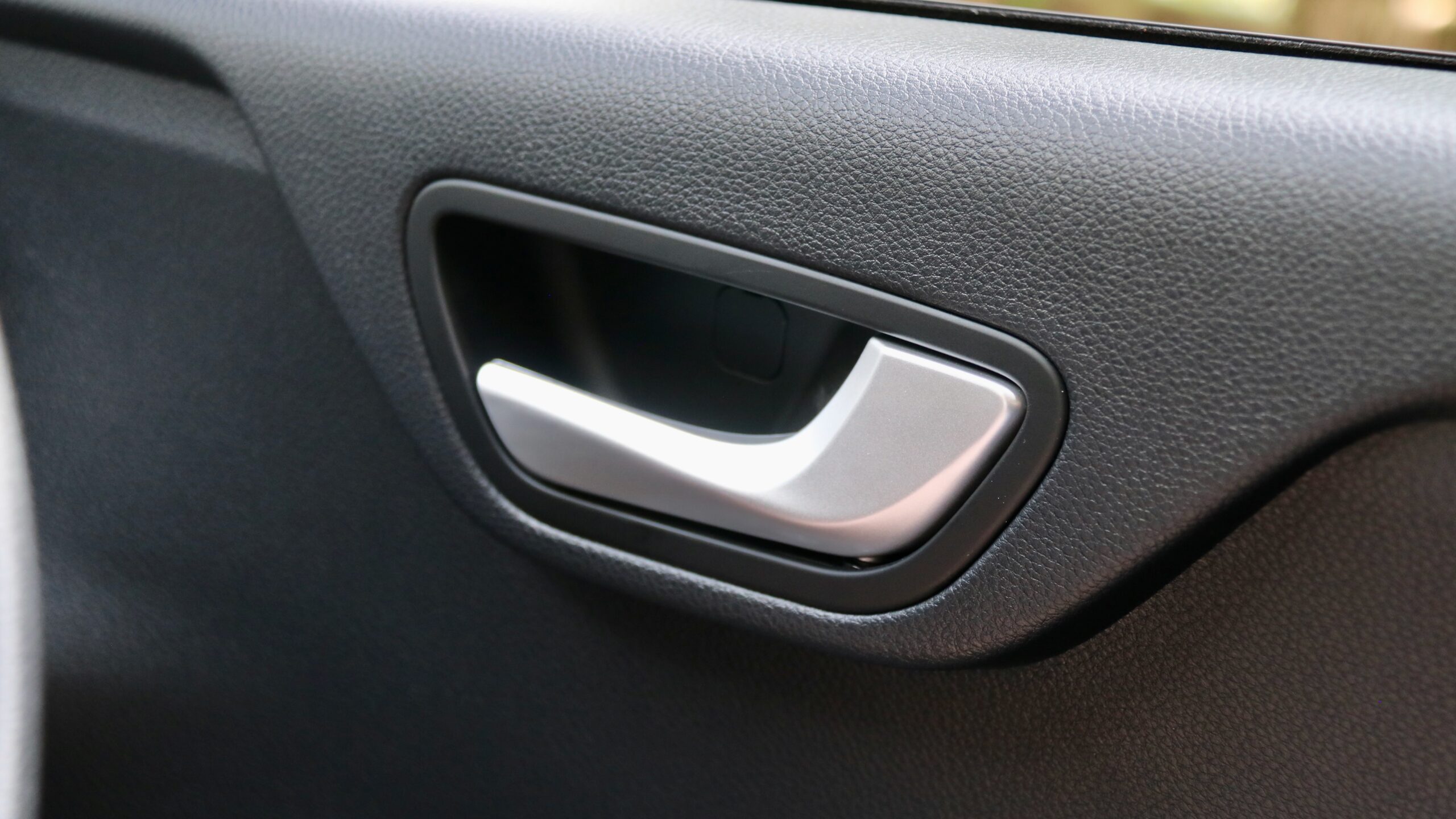
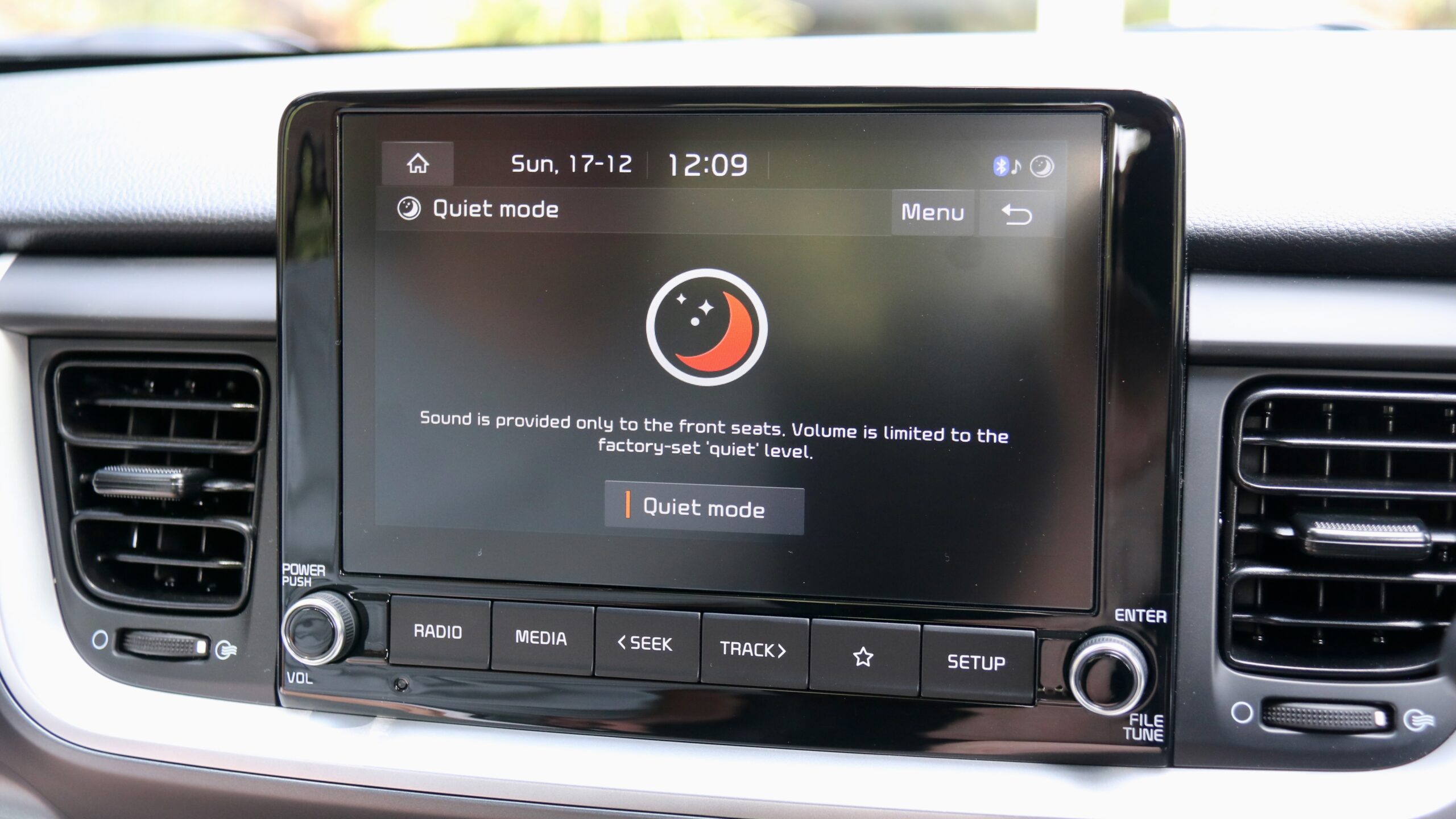
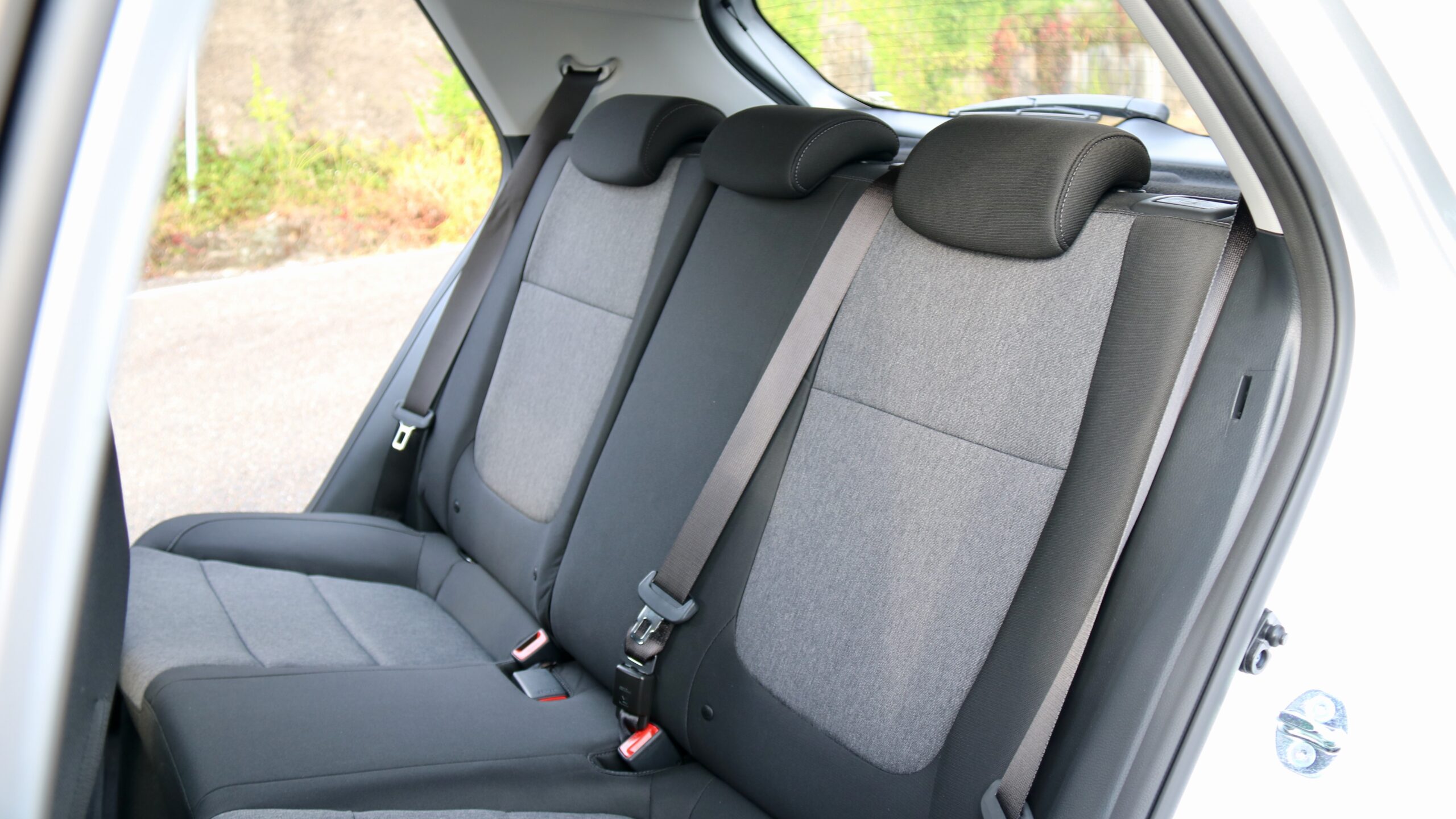
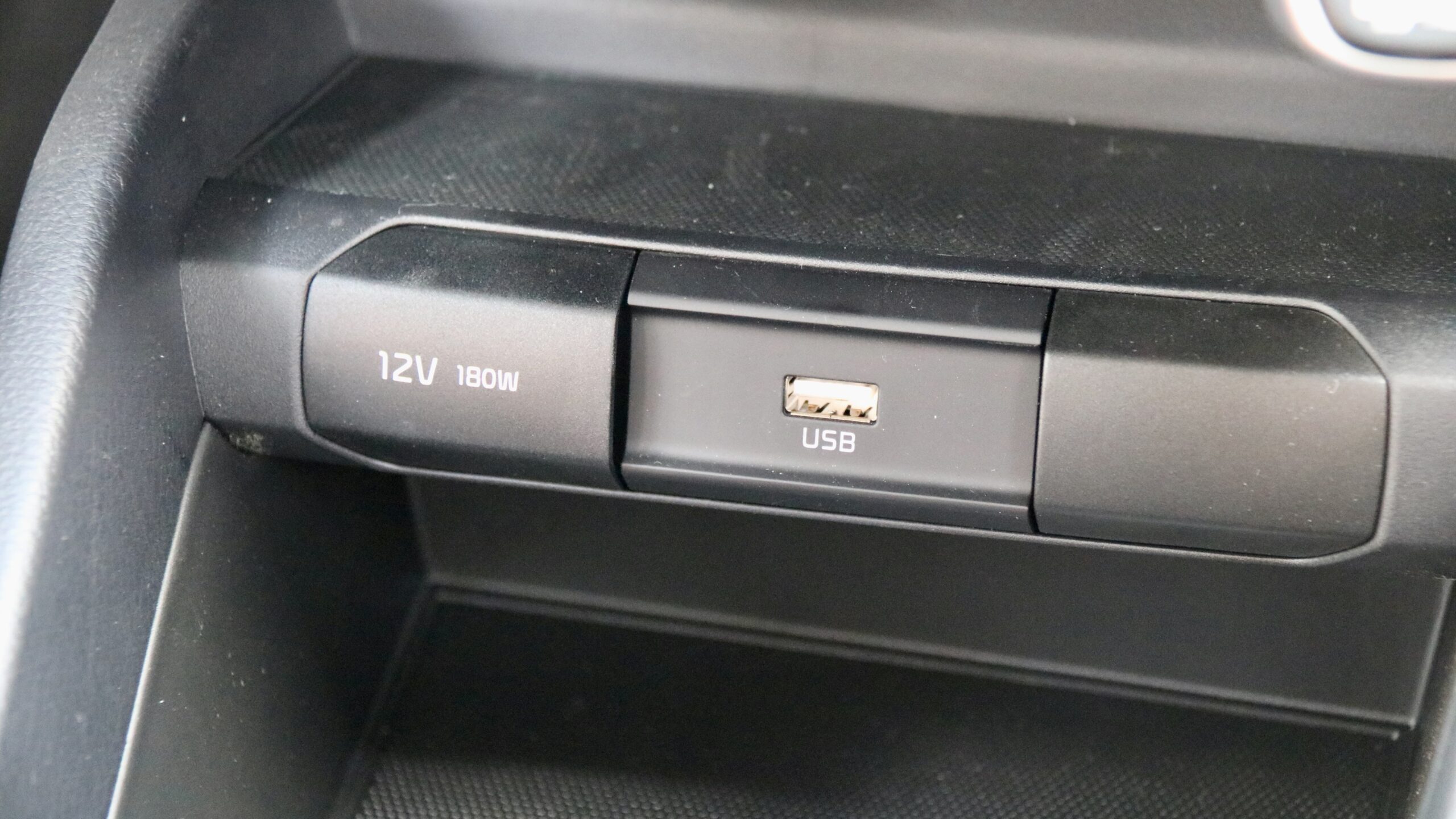
Stonic S colour range:
- Clear White
- Aurora Black ($520)
- Sporty Blue ($520)
- Astro Grey ($520)
- Signal Red ($520)
- Snow White Pearl ($520)
- Honey Bee ($520)
- Sparkling Silver ($520 – fitted to our test car)
Being an entry-level model in an already budget class we understand the Stonic having limited features especially in the S grade. We would however like to see small alloy wheels, a leather steering wheel and more safety equipment featured as standard as this would make the Stonic a more competitive product. At the time of writing, Kia is not taking orders for the S and Sport variants of the Stonic range, reportedly due to supply issues with their 1.4-litre engines – apparently a 2024 model year update, possibly with more equipment, will return the S and Sport to the range but that is yet to be announced.
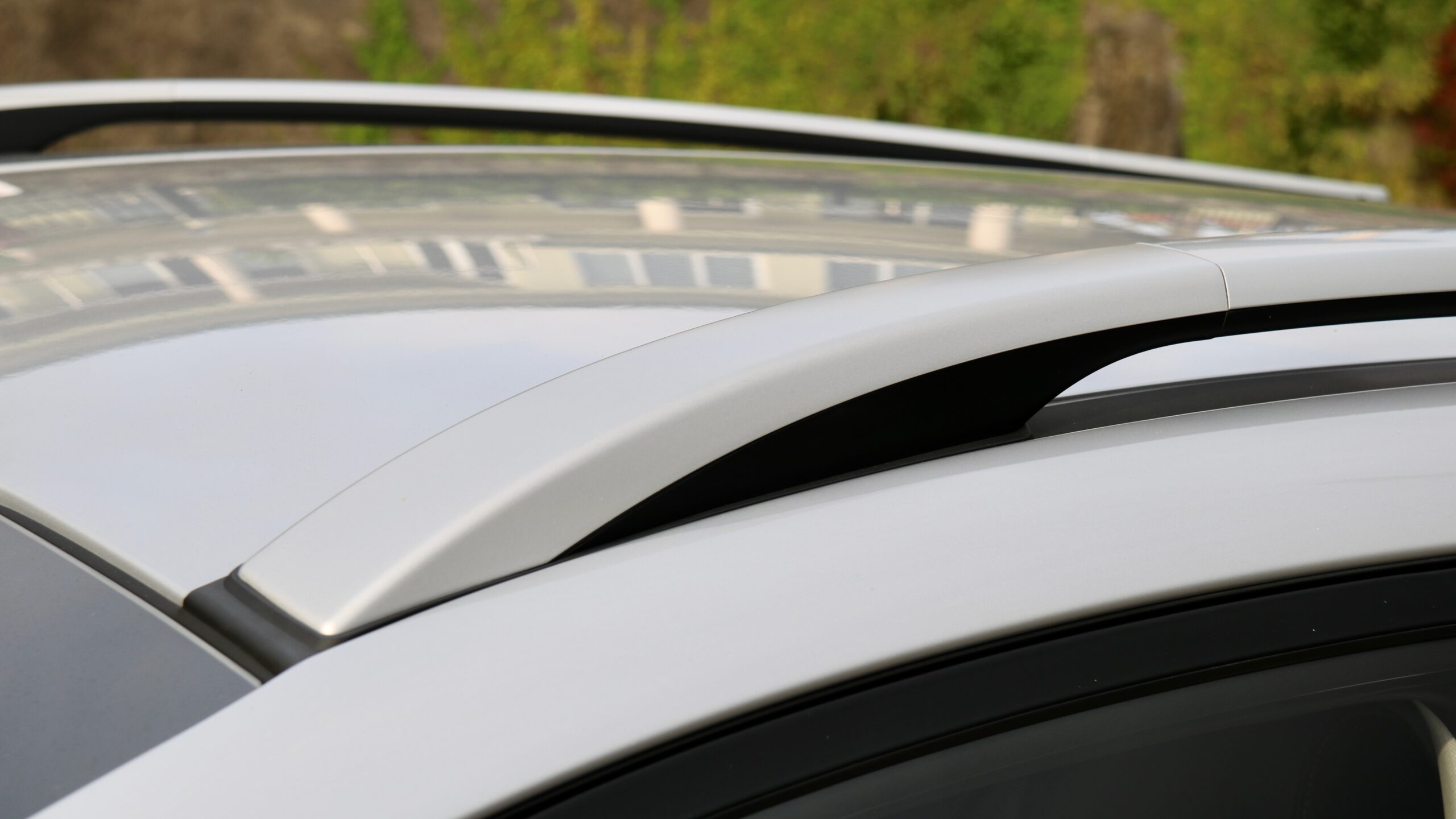
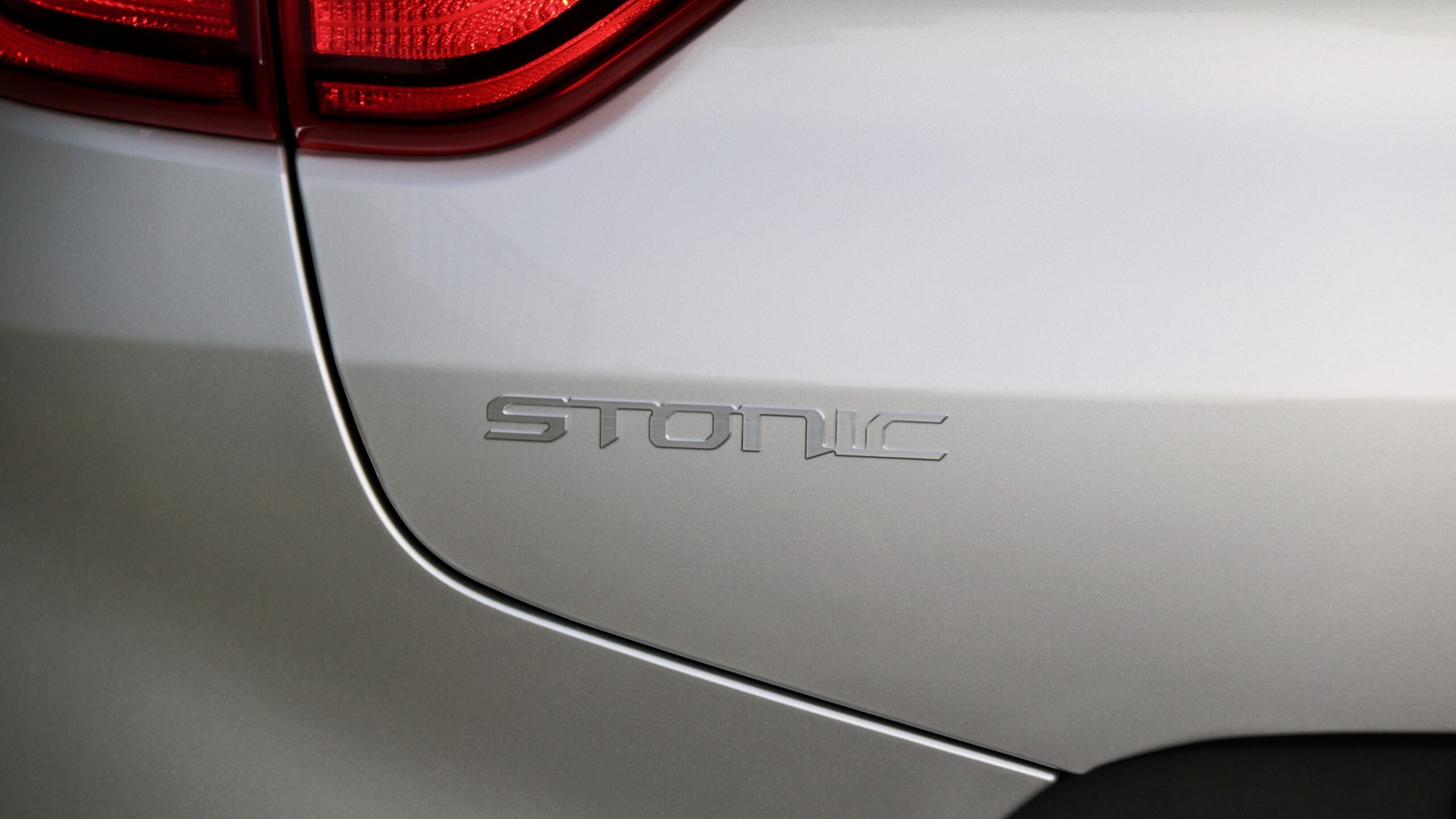
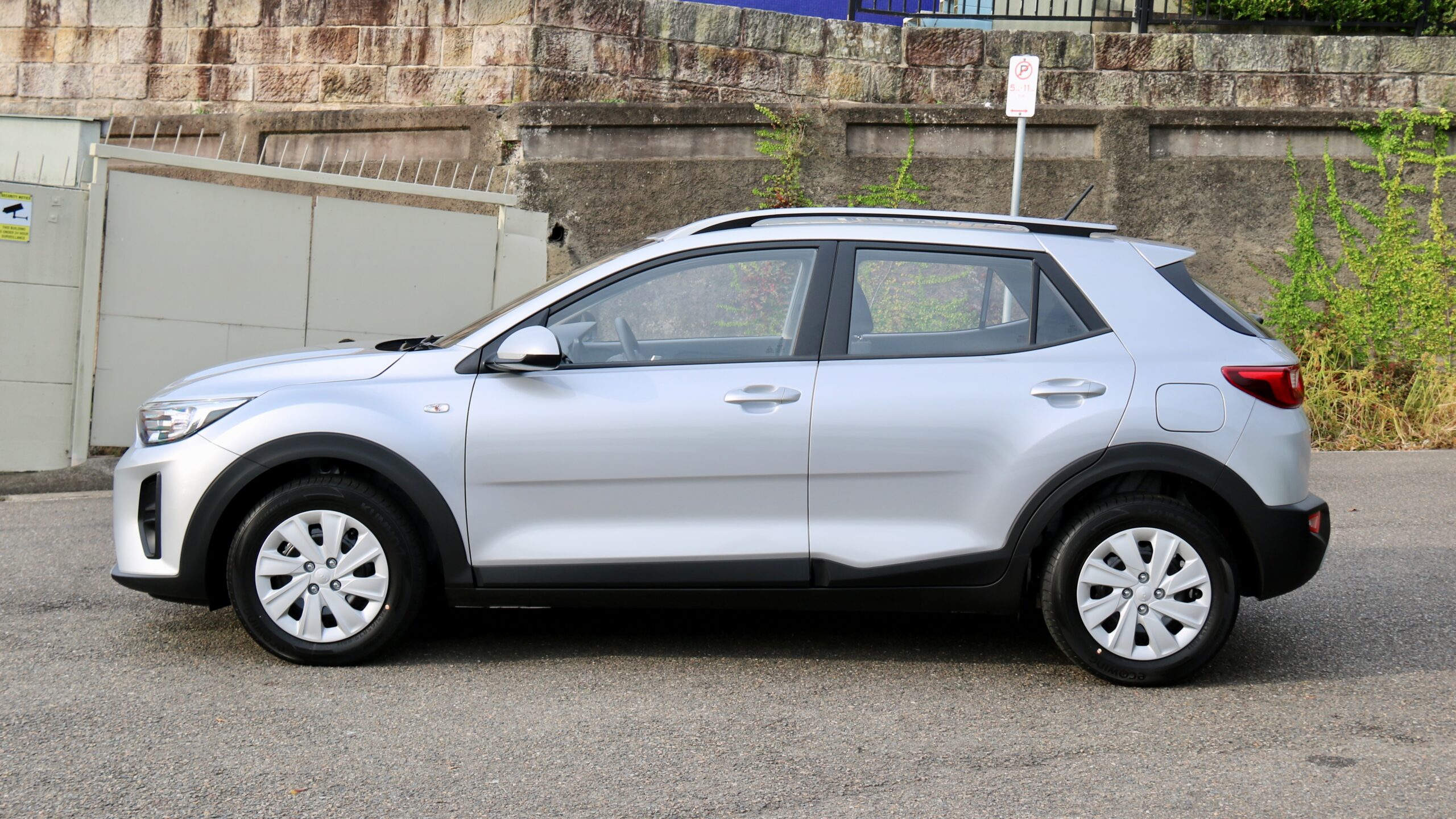
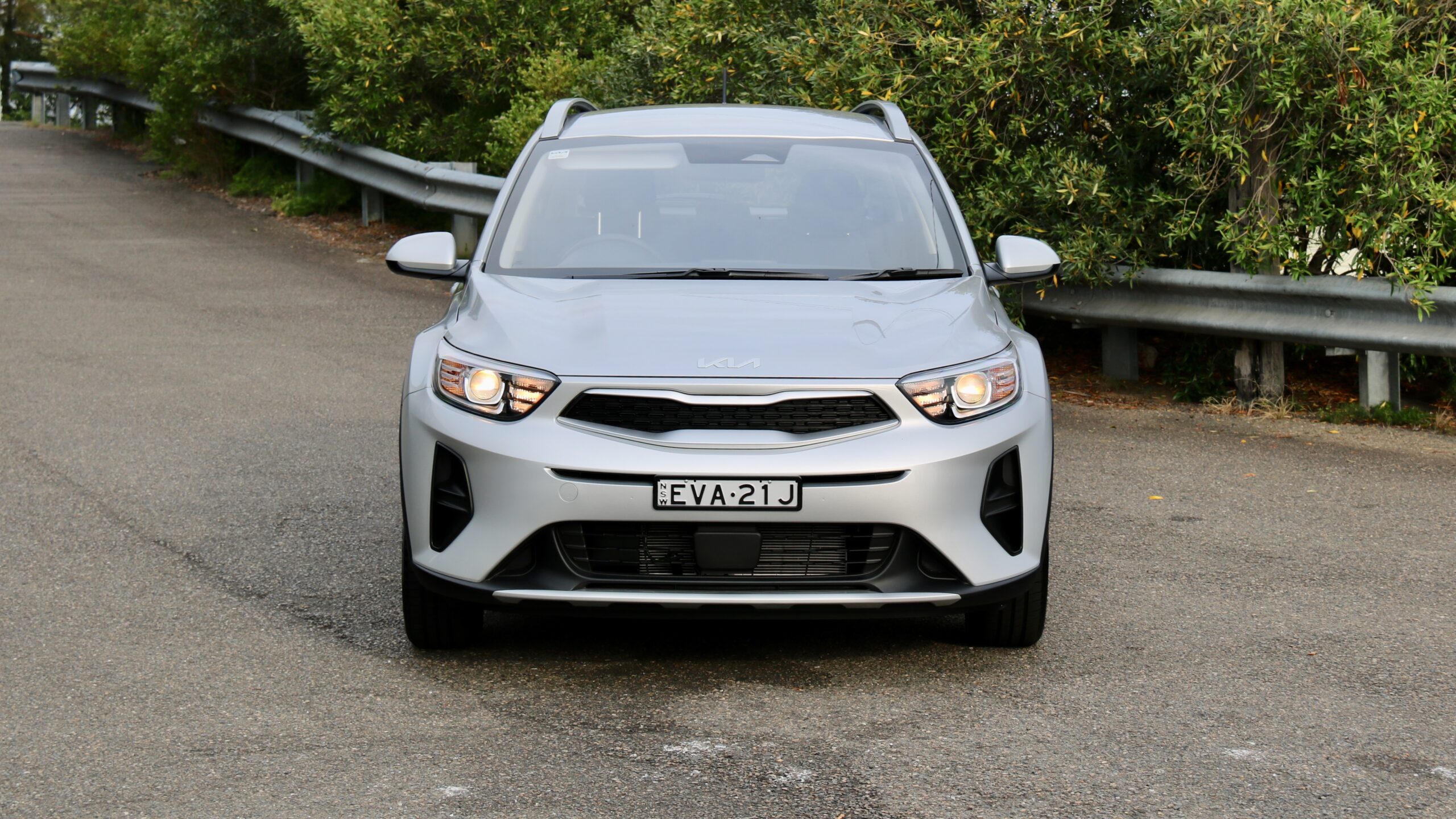
The most direct rivals to the 2023 Kia Stonic S are the Hyundai Venue and the Mazda CX-3. The base Hyundai Venue automatic is priced from $24,000 plus on-road costs (around $28,000 drive away) and the Mazda CX-3 Sport is priced from $26,800 plus on road costs (around $31,000 drive away). Both cars are more expensive than the Kia, but they also have more engine and more equipment. The Hyundai has an alarm, 15-inch alloy wheels, heated exterior mirrors and tyre pressure monitoring though it also has less speakers, no auto windows and no rear parking sensors. The Mazda features 16-inch alloy wheels, push button start, blind-spot monitoring with rear cross traffic alert, rear AEB, power- folding exterior mirrors and digital radio over the Kia, giving it a reasonable equipment boost for $4,000.
What’s under the bonnet of the 2023 Kia Stonic S?
Under the bonnet of the 2023 Kia Stonic S is a 1.4-litre naturally aspirated four-cylinder petrol engine that produces 74kW of power (at 6,000rpm) and 133Nm of torque (at 4,000rpm) – versus the CX-3’s larger 110kW/195Nm 2.0-litre engine and the Venue’s 90kW/151Nm 1.6-litre engine. You can choose this engine with either a six-speed manual (thank you Kia for still offering it!) or the six-speed torque converter automatic that featured in our test car.
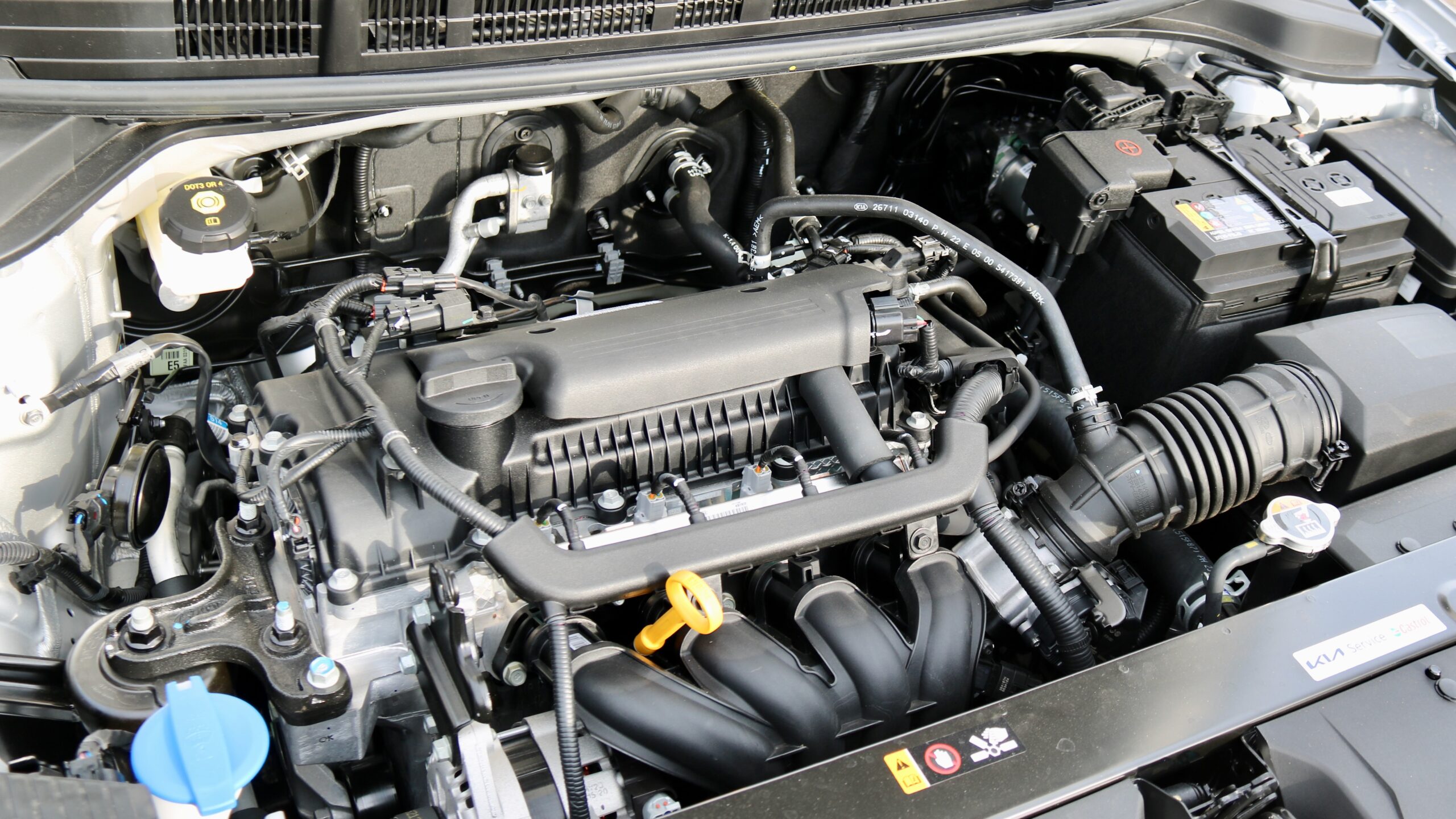
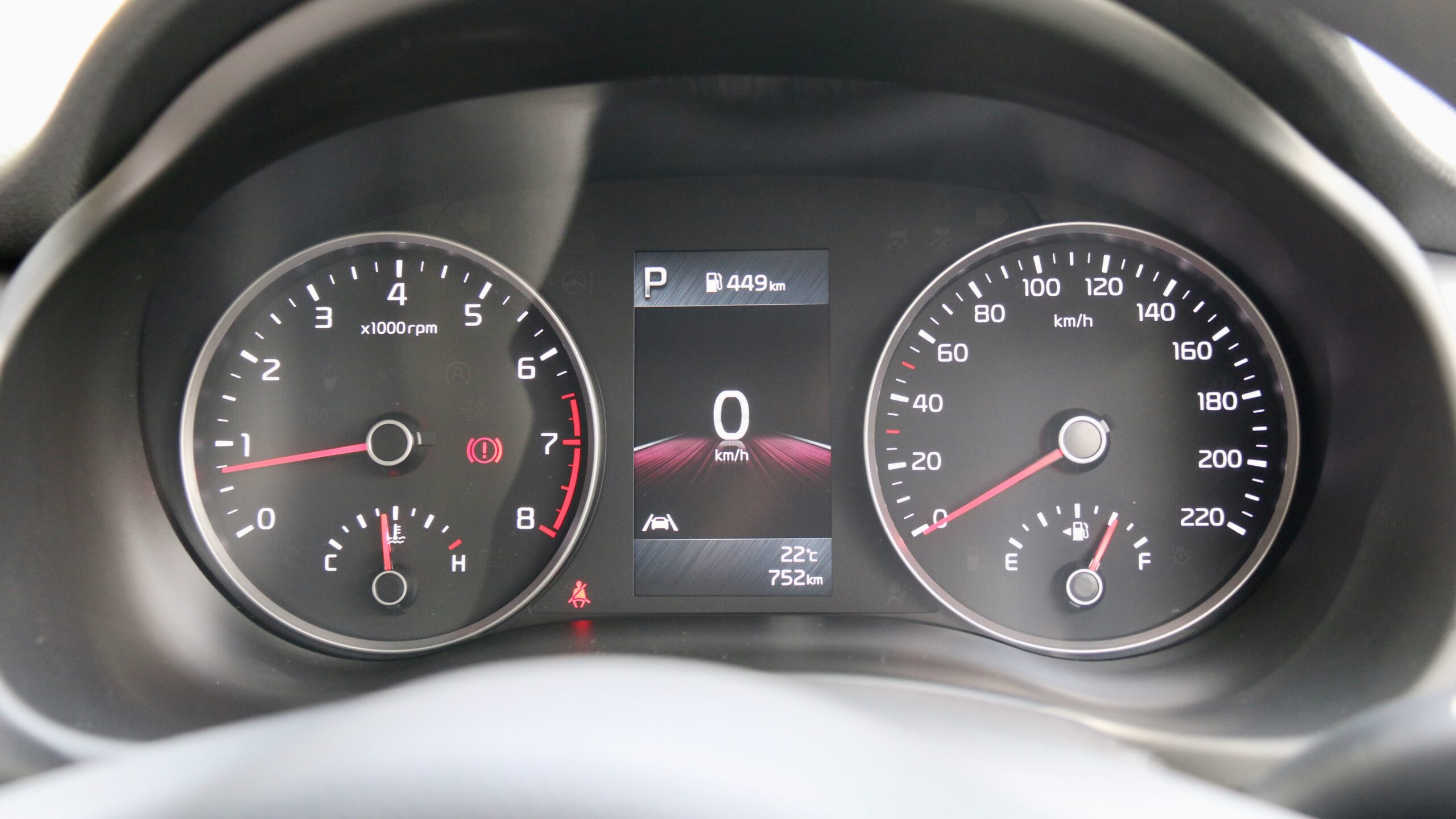
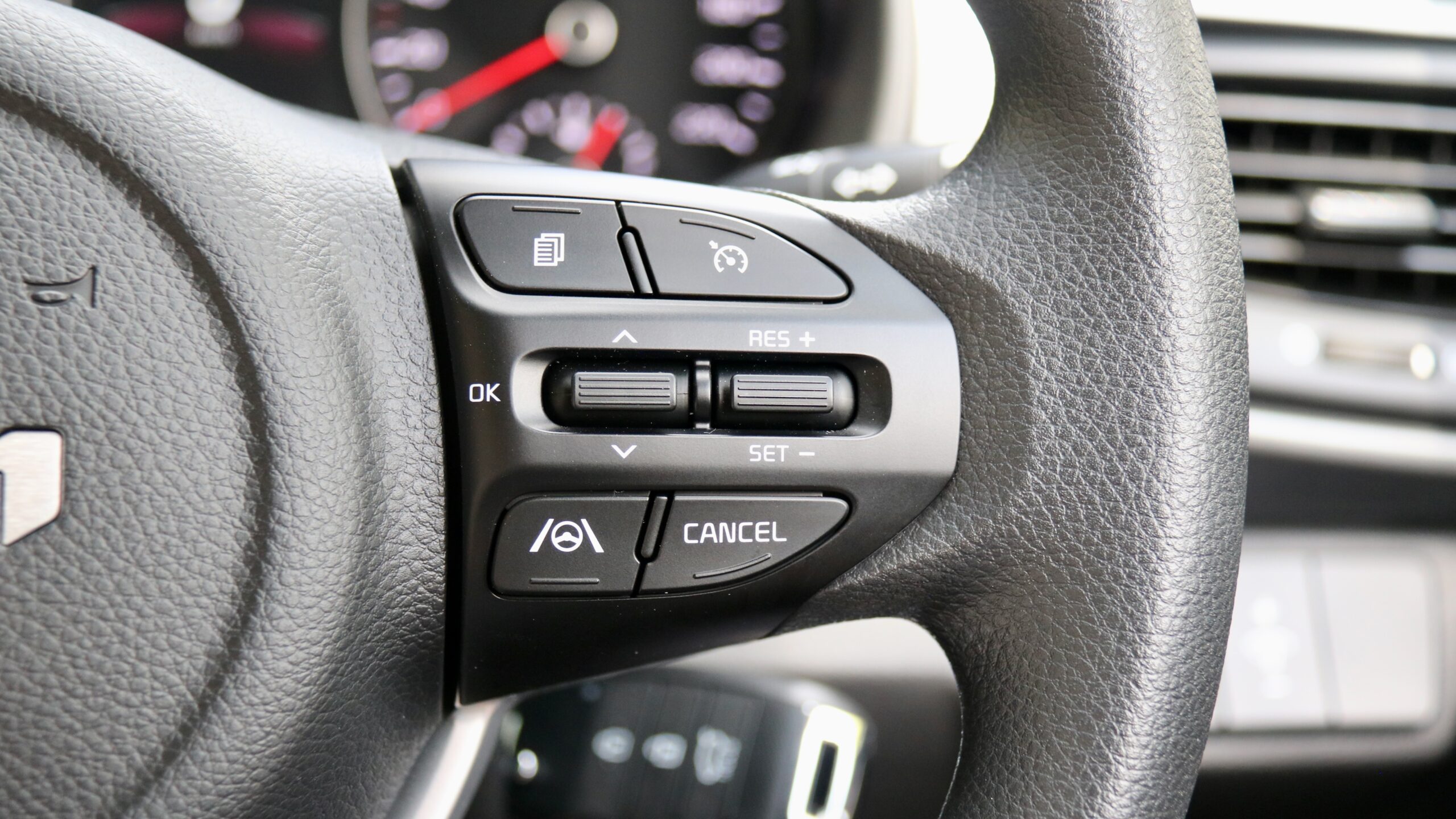
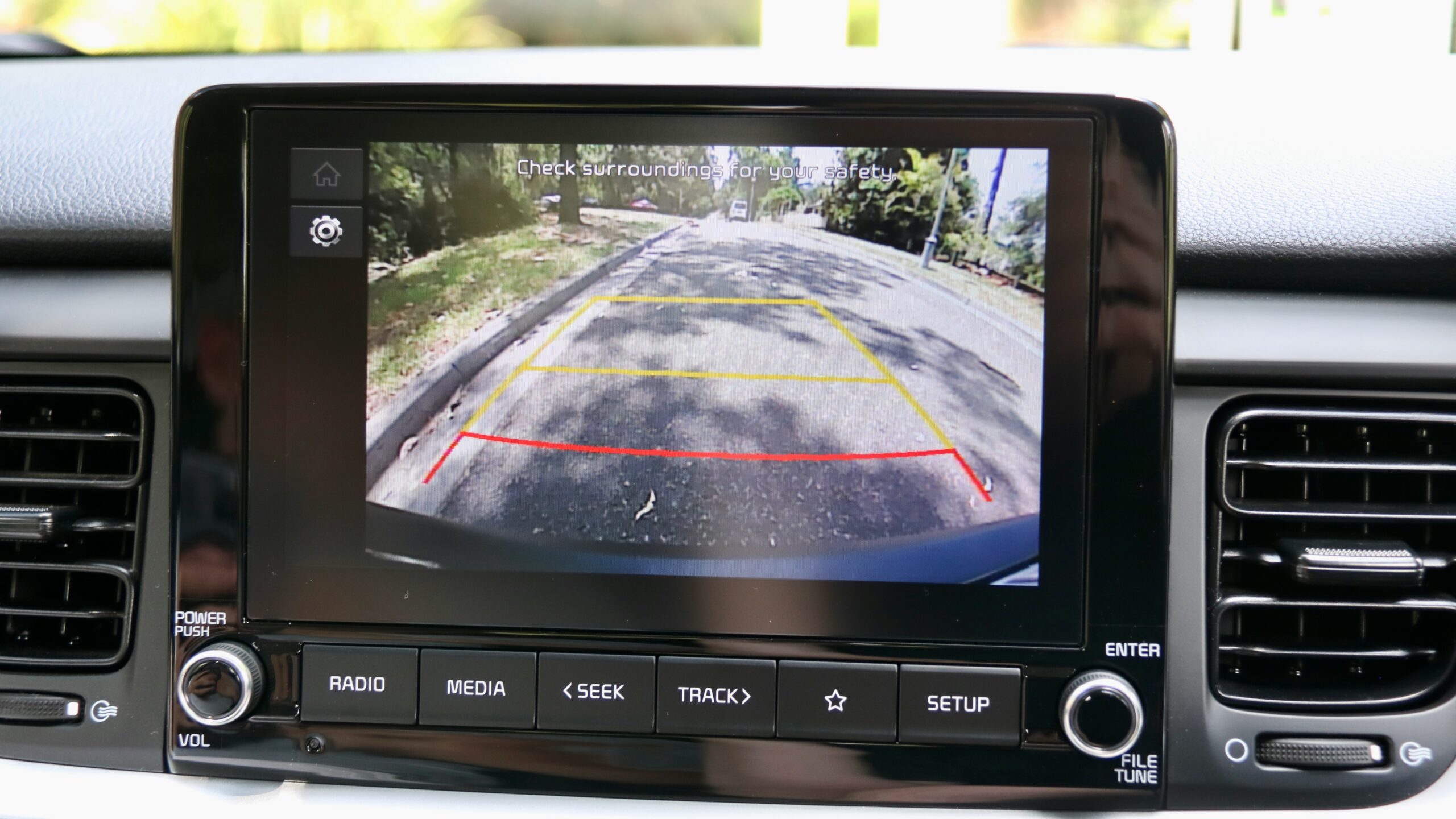
Regardless of which transmission you choose, however, the Stonic’s engine is lacklustre. The engine is simply not powerful enough, even in everyday use and it’s also quite loud when you’re pushing it – which you have to do in order to extract any performance out of it. A superior engine option exists in the top-spec Stonic GT-Line, which uses a turbocharged 1.0-litre three-cylinder engine that makes the same 74kW of power but a stronger 172Nm of torque, much lower in the rev range too, from just 1,500rpm. We wish this engine would be offered as an option across the Stonic range, as it’s far better than the 1.4-litre engine that we tested here.
The six-speed automatic transmission fitted to our 2023 Kia Stonic S test car is fine, though it held first gear for a while before selecting second and the change up between first and second gear was quite abrupt as well. Once in second we felt the transmission behaved as a typical torque converter with a low powered engine. The transmission does what it can with the engine’s small outputs, shifting largely smoothly and quietly, as a good transmission should.
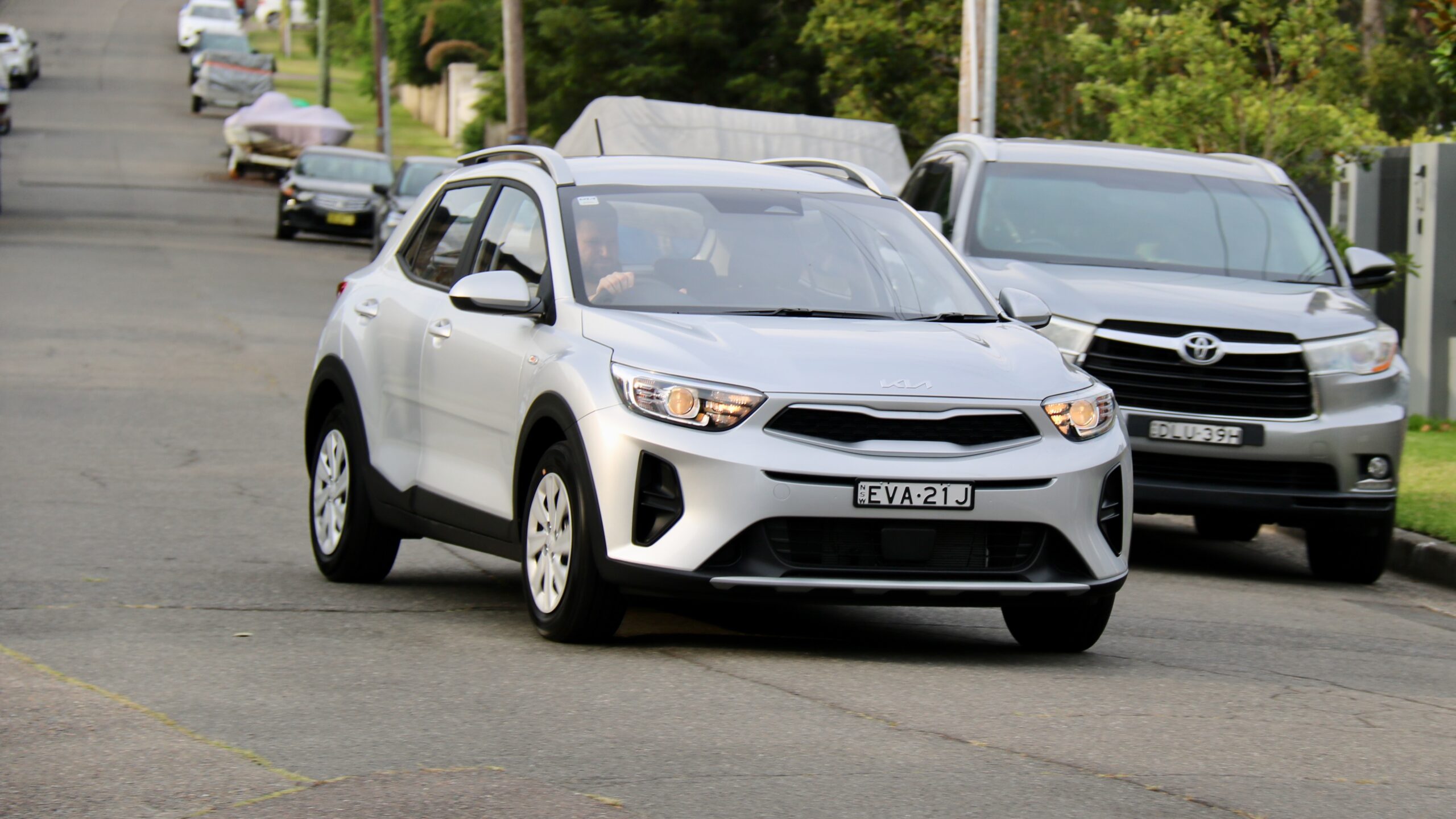
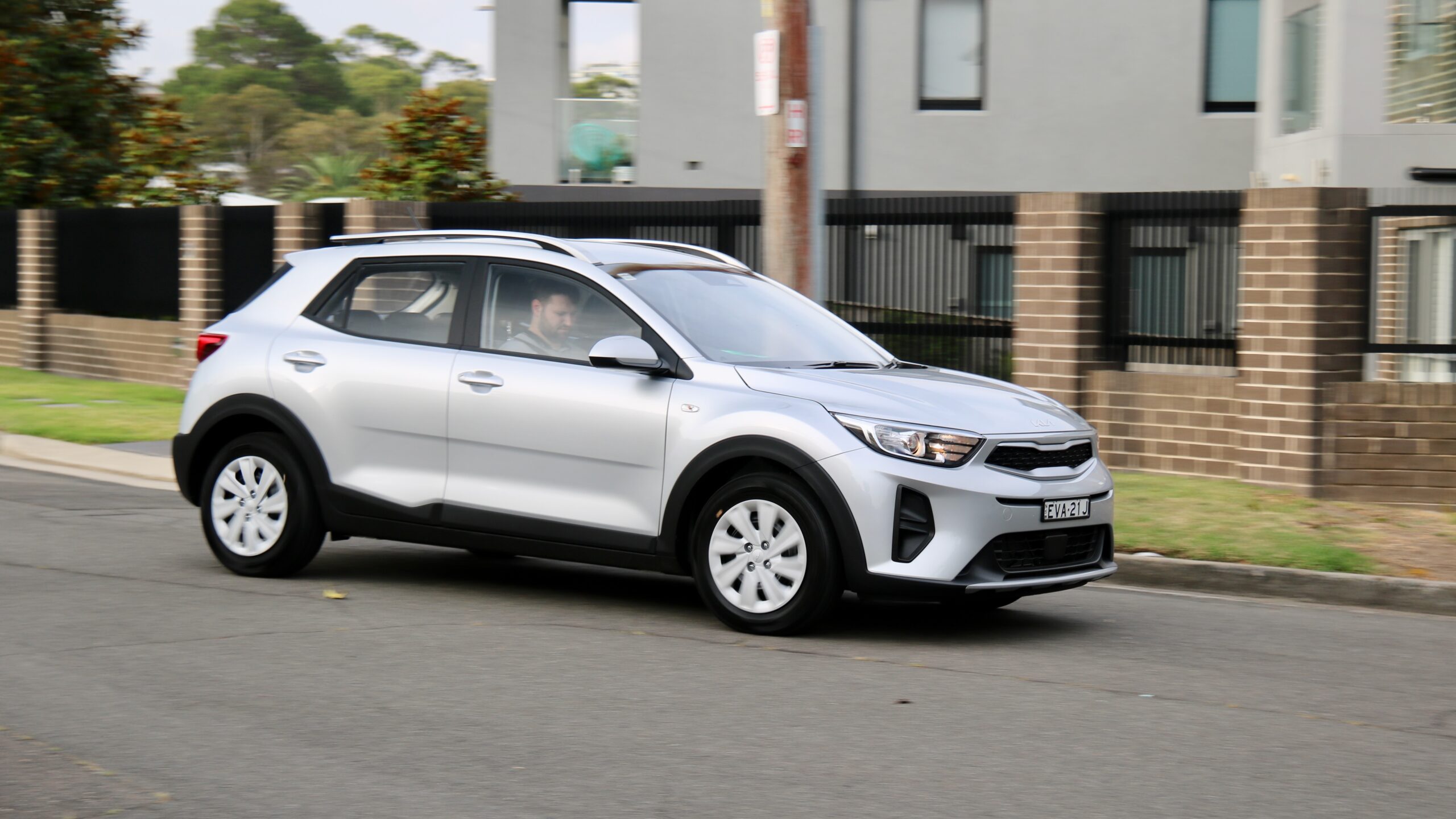
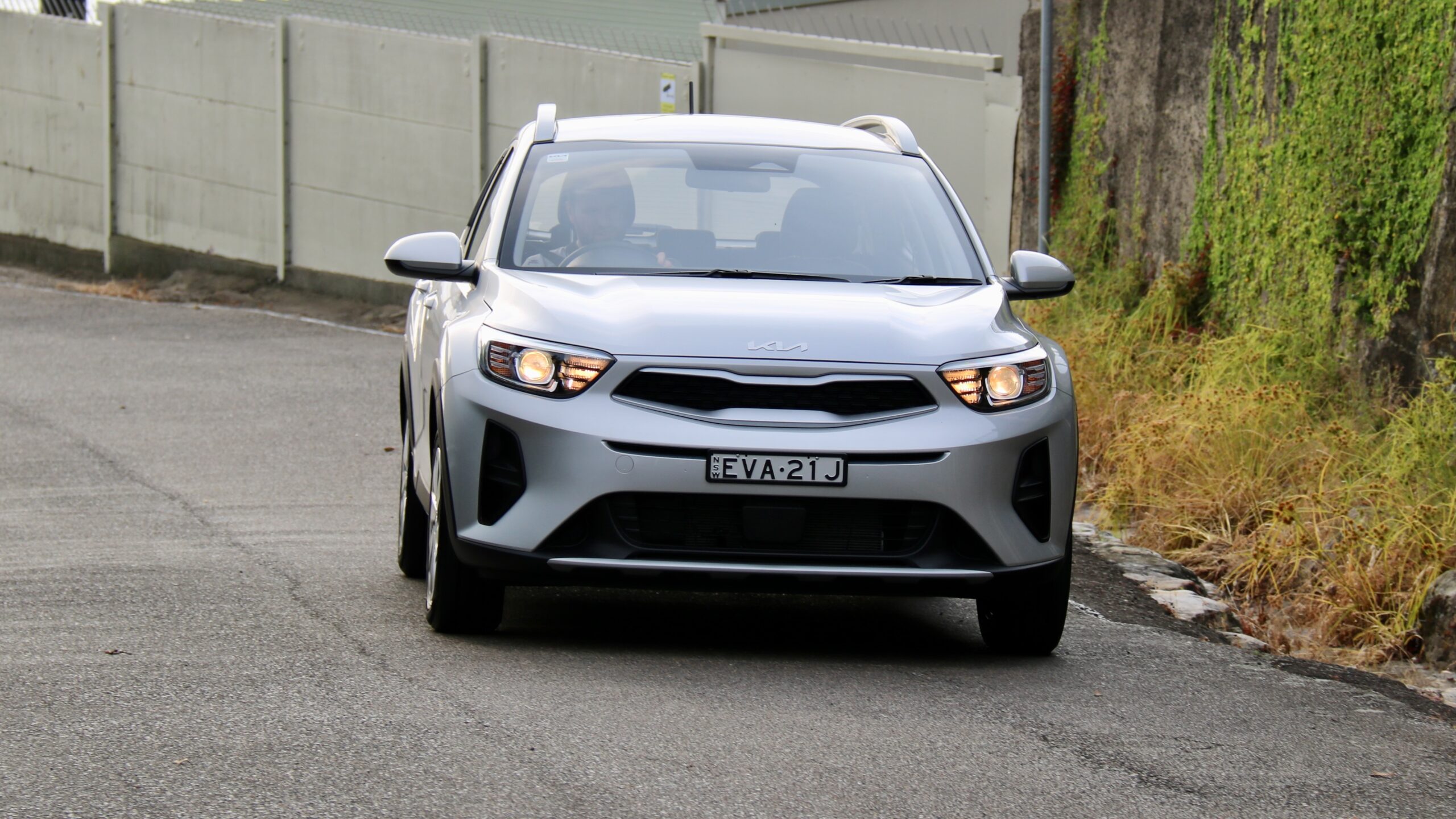
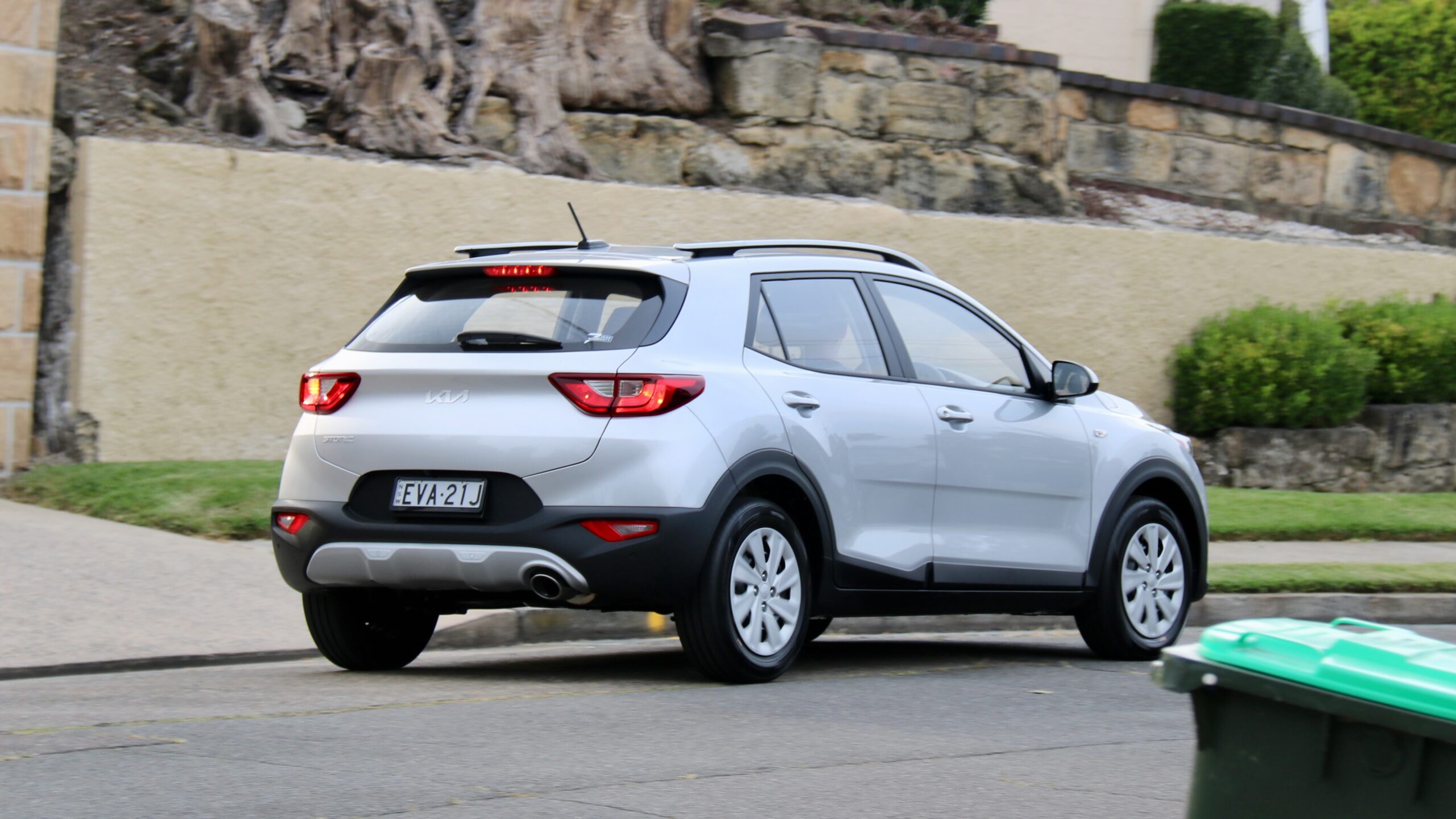
The claimed combined fuel consumption for the Stonic S fitted with the automatic gearbox is 6.7L/100km with CO2 emissions of 155g/km – the CX-3’s equivalents are 6.3L/100km and 143g/km and the Venue’s are 7.2L/100km and 165g/km. In combined driving, we achieved 9.7L/100km in the Stonic, which is a lot more than a CX-3 in our testing, yet with less performance. The Stonic runs on 91RON regular unleaded and it has a 45-litre fuel tank, giving a range of barely 450km in our testing.
How does the 2023 Kia Stonic S drive?
Using the same platform as the Kia Rio light hatch, the 2023 Kia Stonic S drives quite nicely. The ride quality is a particular highlight as it isn’t too firm, yet it’s got great body control and is quite agile too. The steering isn’t the last word in feel, but it’s well weighted and the handling is quite fun as well. While it’s not quite as nice to drive as a CX-3, it is more comfortable. The Stonic also feels more mature than the CX-3 at highway speeds, with a nicely planted feeling despite its low 1,192kg tare weight.
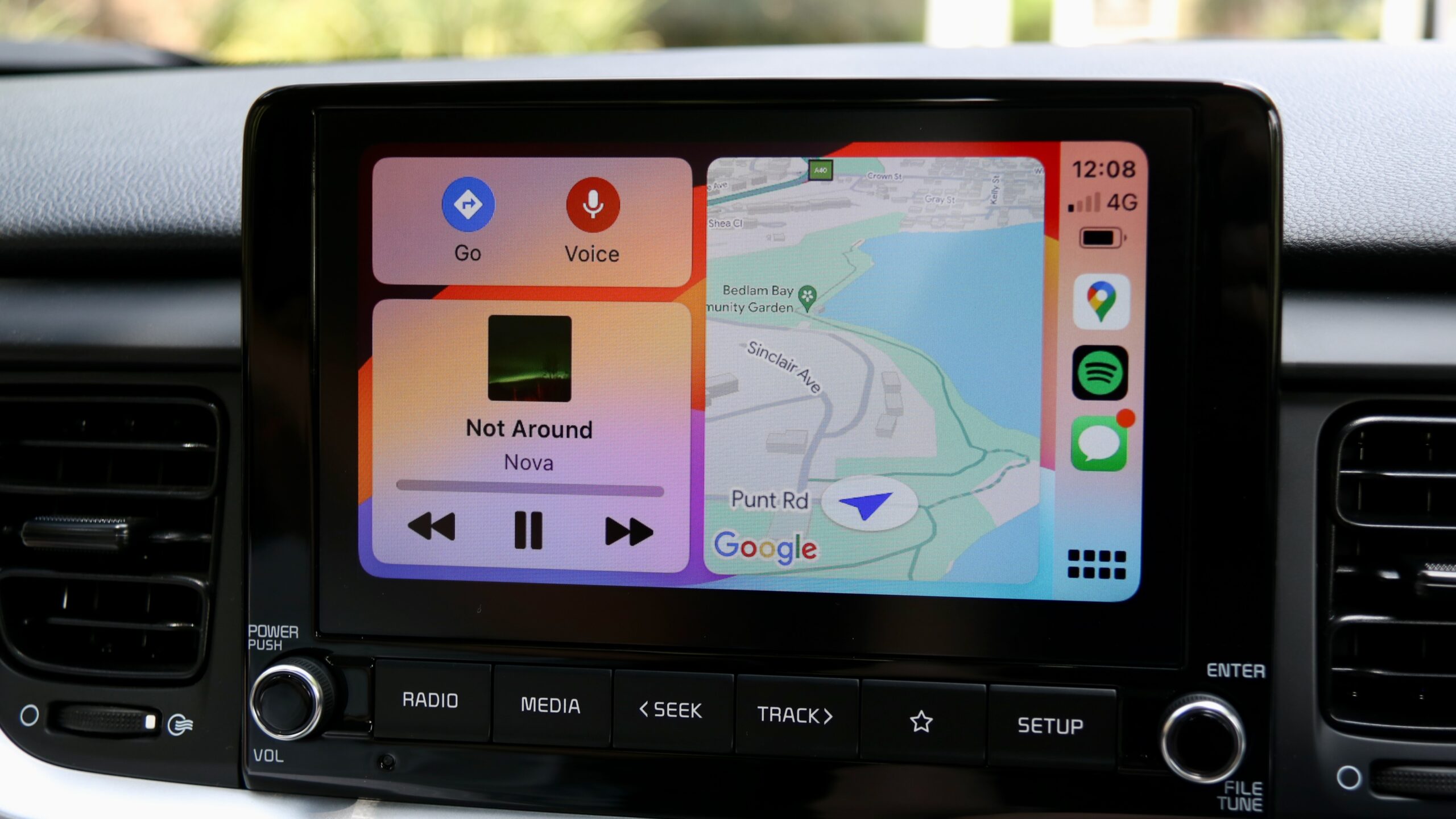
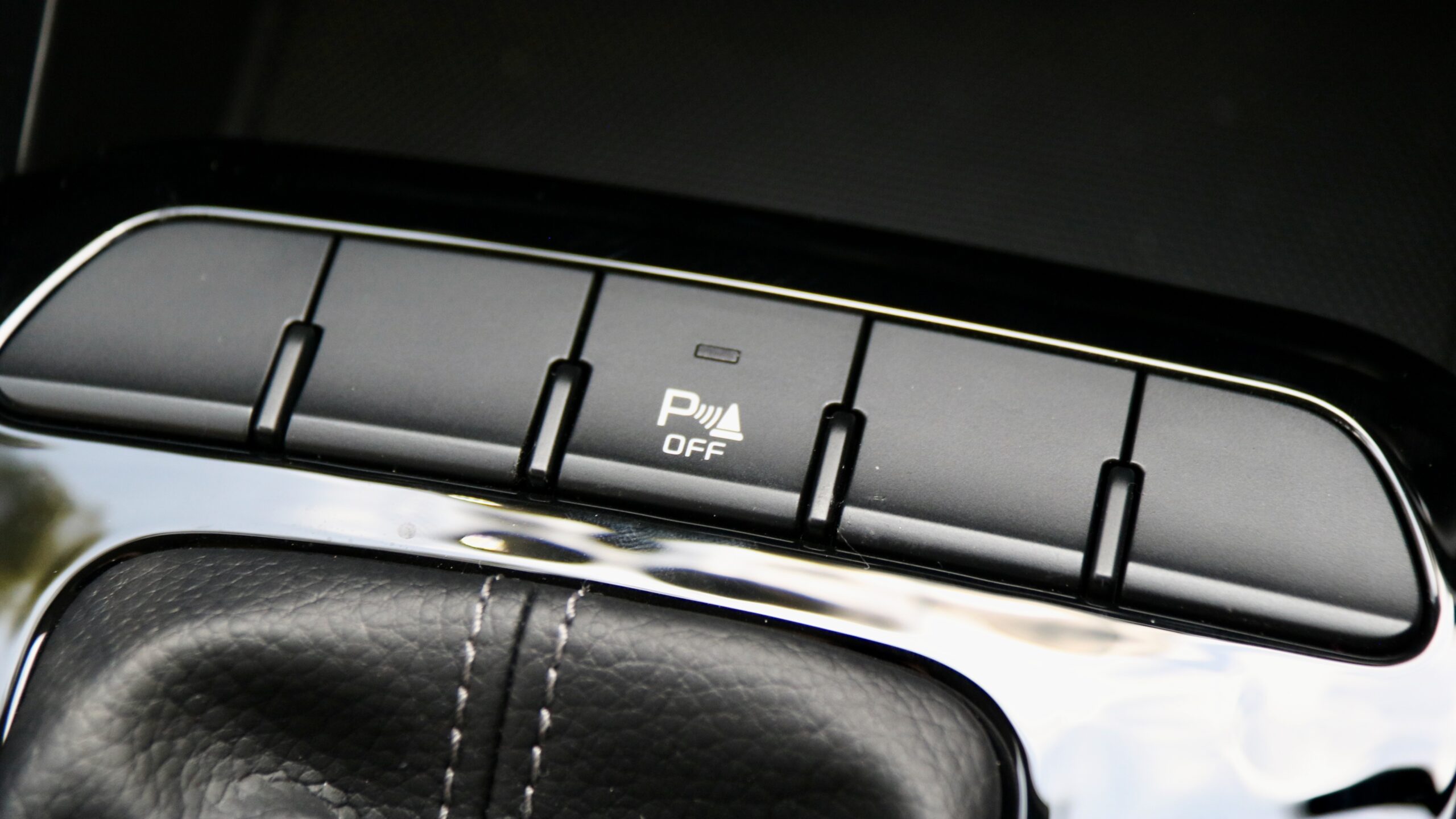
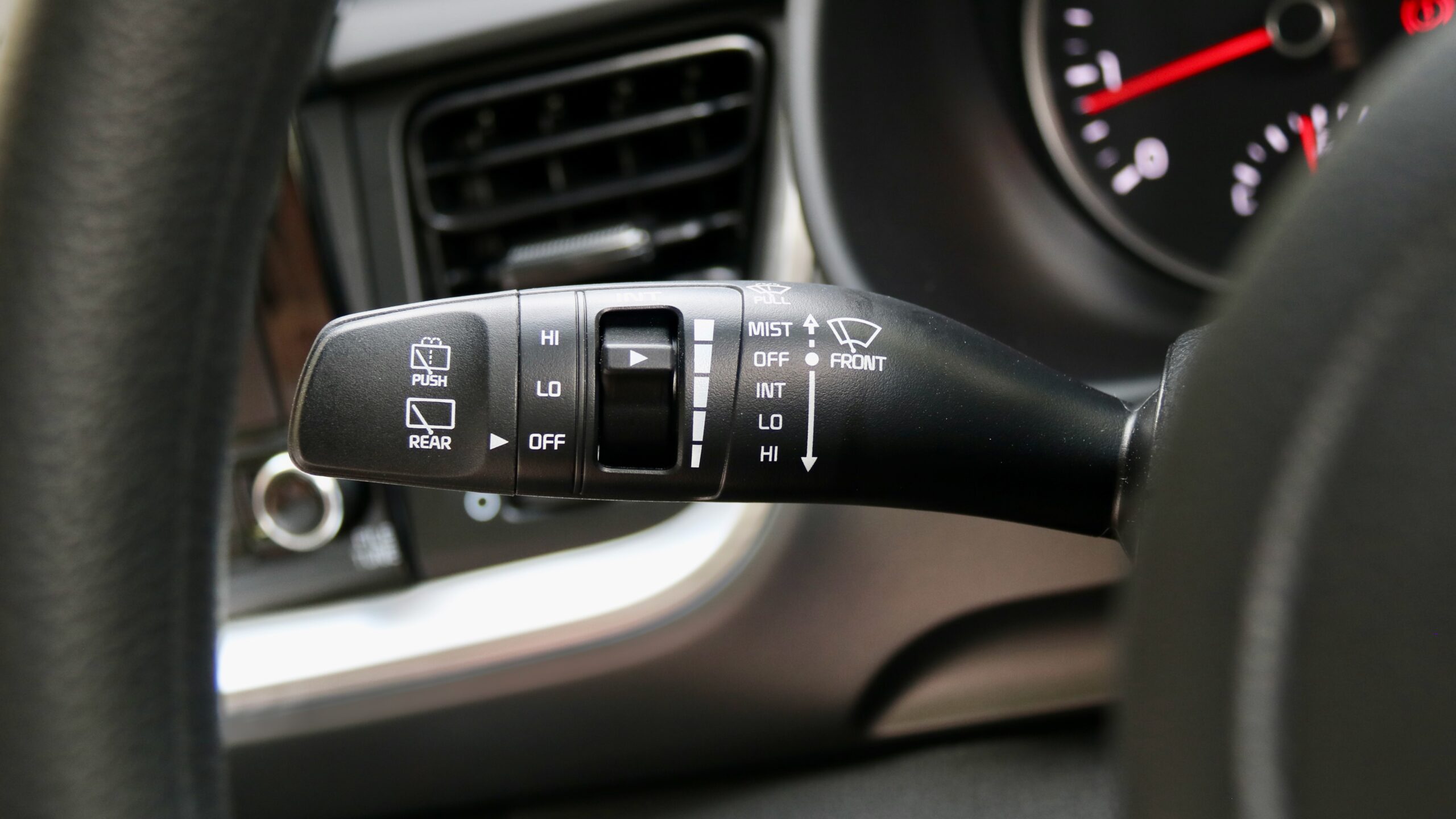
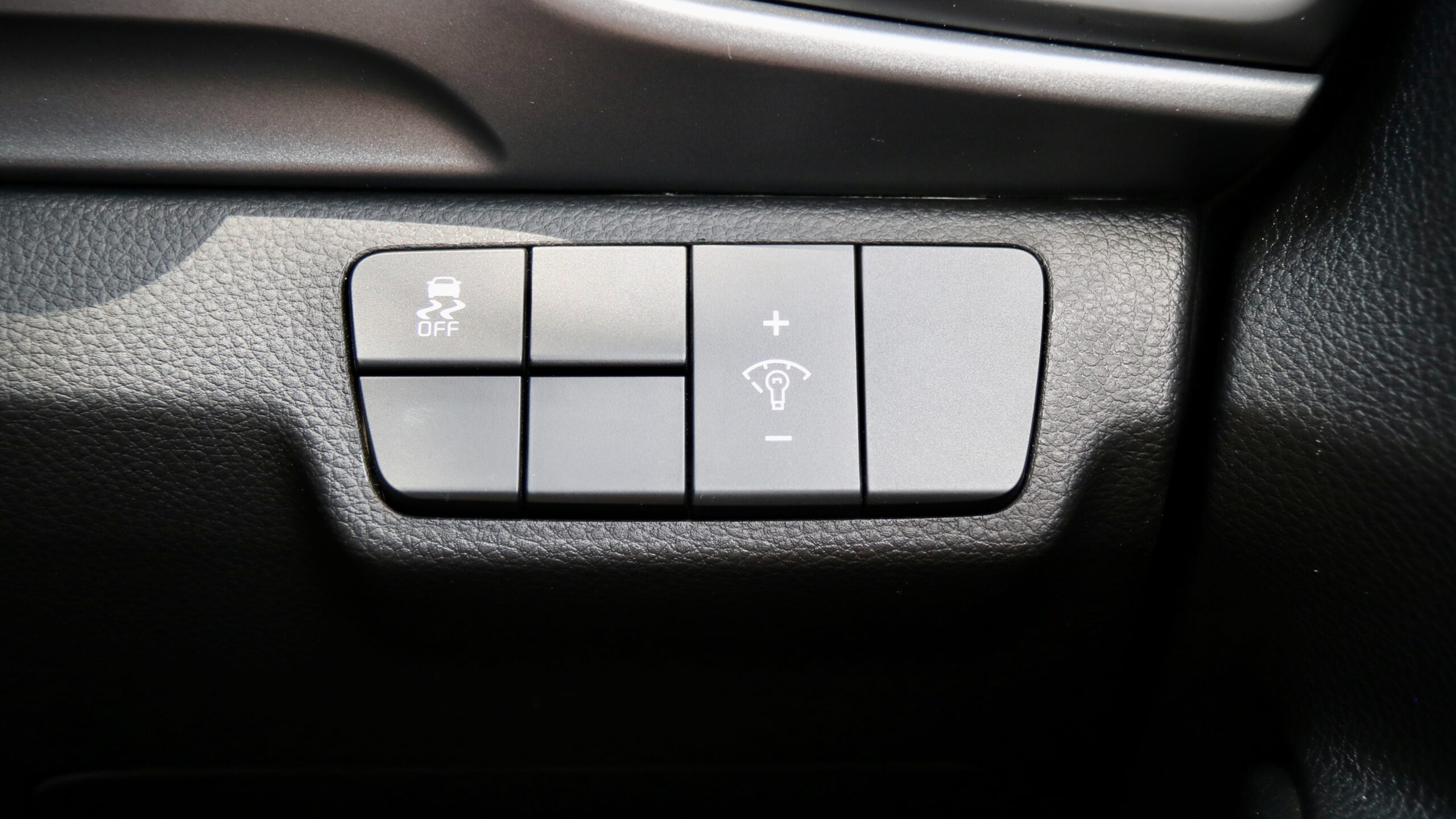
Helping the driving experience further is good visibility, while the road noise levels are lower than you might expect as well. We also quite like Kia’s tuning of its active safety systems and how easy they are to disable if you so desire – the lane keep assist, for example, does a good job of keeping you in your lane above 60km/h but if you don’t want it, just hold the button on the steering wheel and it turns off. We would like to see features like blind-spot monitoring and rear cross-traffic alert added, however.
What is the interior of the 2023 Kia Stonic S like?
As you’d expect for a budget entry level SUV, the 2023 Kia Stonic S’s cabin is pretty barebones but Kia has tried to hide that fact as best it can. As you’d expect from a Kia, the Stonic’s cabin is well screwed together and feels built to last but the materials aren’t great with not a soft touch panel in the entire car. The switchgear in the CX-3 definitely feels higher quality with a more liberal use of soft touch materials in the front cabin. The Venue is similar in nature to the Stonic in the interior department, however.
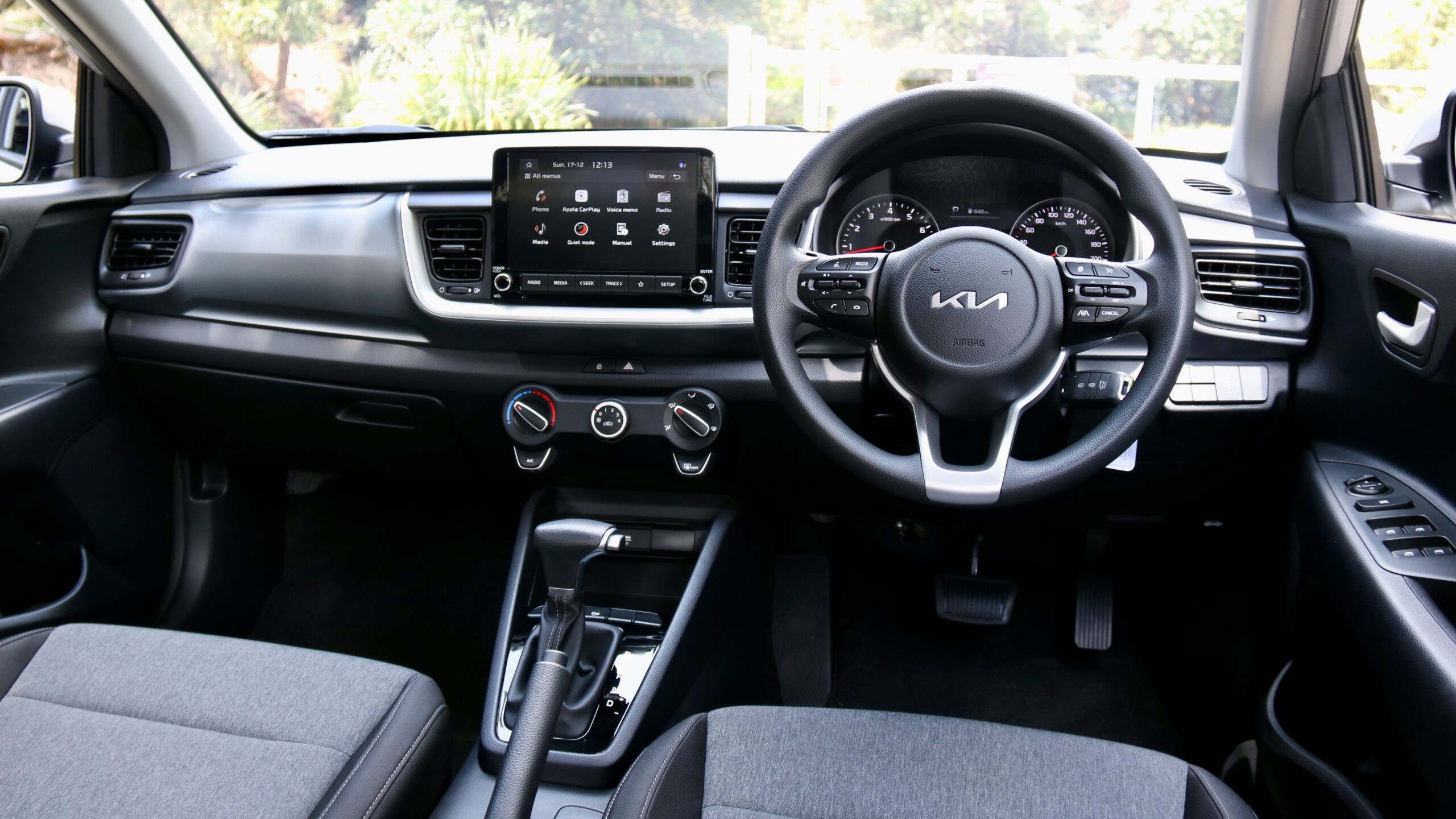
The Stonic’s cabin is more practical than both the CX-3 and Venue though, with reasonably sized door bins with a few layers of storage, an uncovered tray in the centre console and a large glovebox. Choosing the Stonic Sport over the S gains a small centre console too, which is what we’d do.
Centre of the Stonic S’s cabin is an 8.0-inch touchscreen with wireless Apple CarPlay and Android Auto. The software is identical to a lot of other Kia models with easy to use functionality and a good mix of colours – it’s superior to the slow system used in the Mazda CX-3. The reversing camera in the Stonic is far grainier than what’s used in the Seltos and Sportage though, and needs an upgrade. The six-speaker sound system is reasonable too, though hardly anything special.
The seats in the 2023 Kia Stonic are quite comfortable and while they don’t have the most adjustment to them, we did find them better than those used in other small SUVs. The lack of a leather or faux leather steering wheel in the Stonic S is annoying and makes it feel cheap.
The rear seat of the Stonic is reasonably spacious for the class, especially compared to the cramped CX-3, though the Venue is about on par but with more headroom. Six-footers will fit fine, but keep it to two instead of three for maximum comfort and longer journeys are discouraged. It also features one map pocket and door pockets but that’s it – no arm rest, charging port or second map pocket.
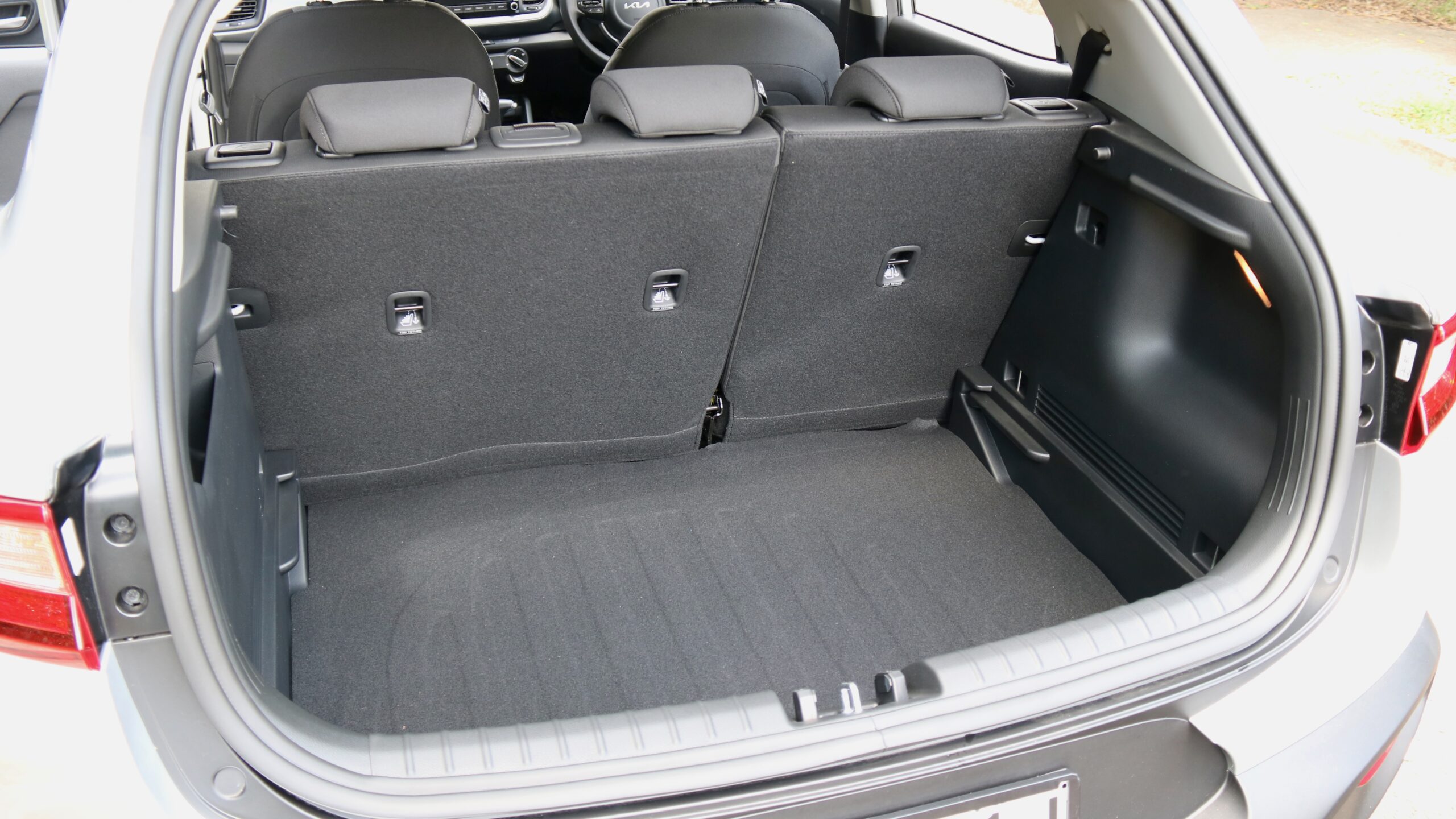
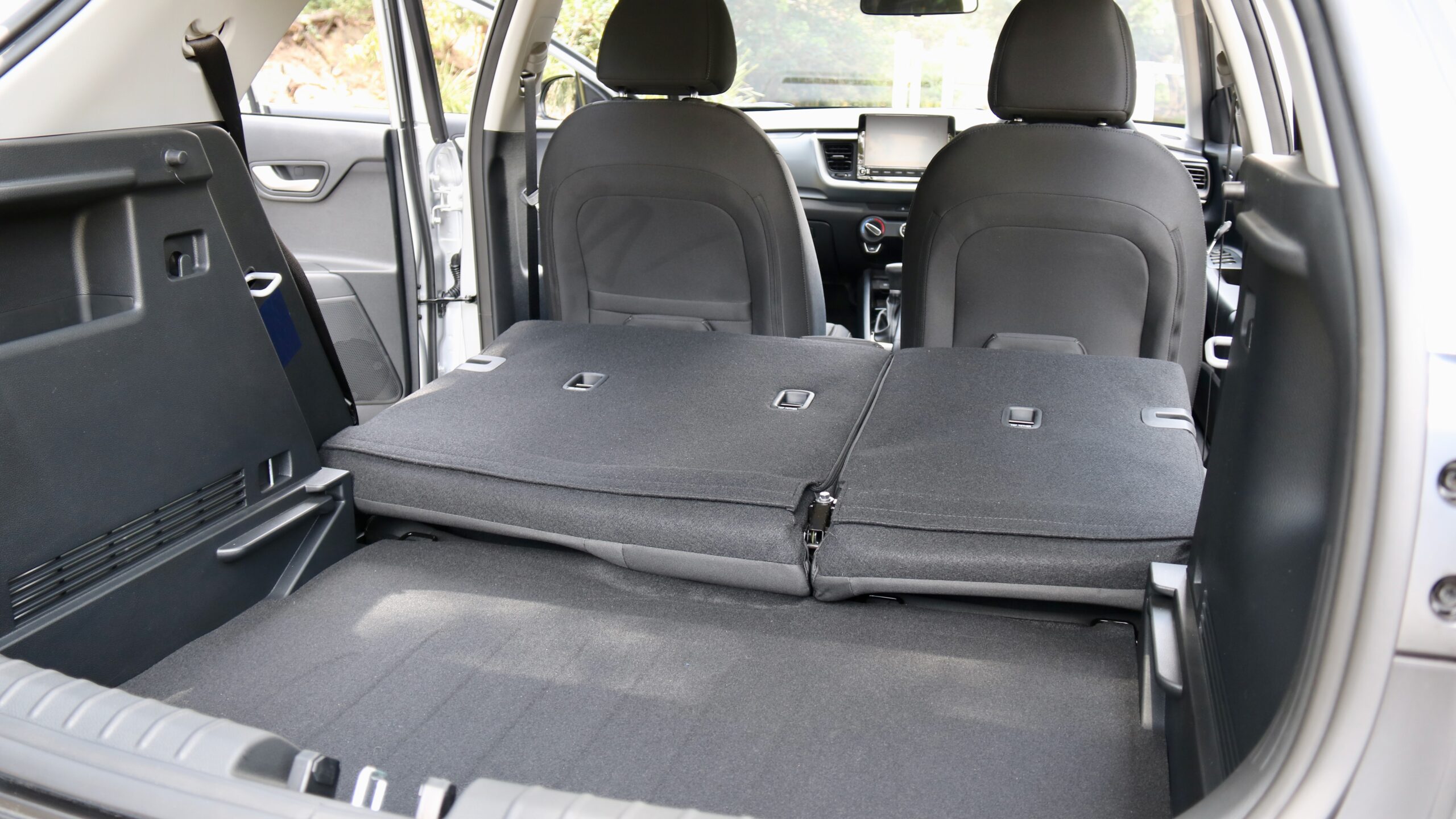
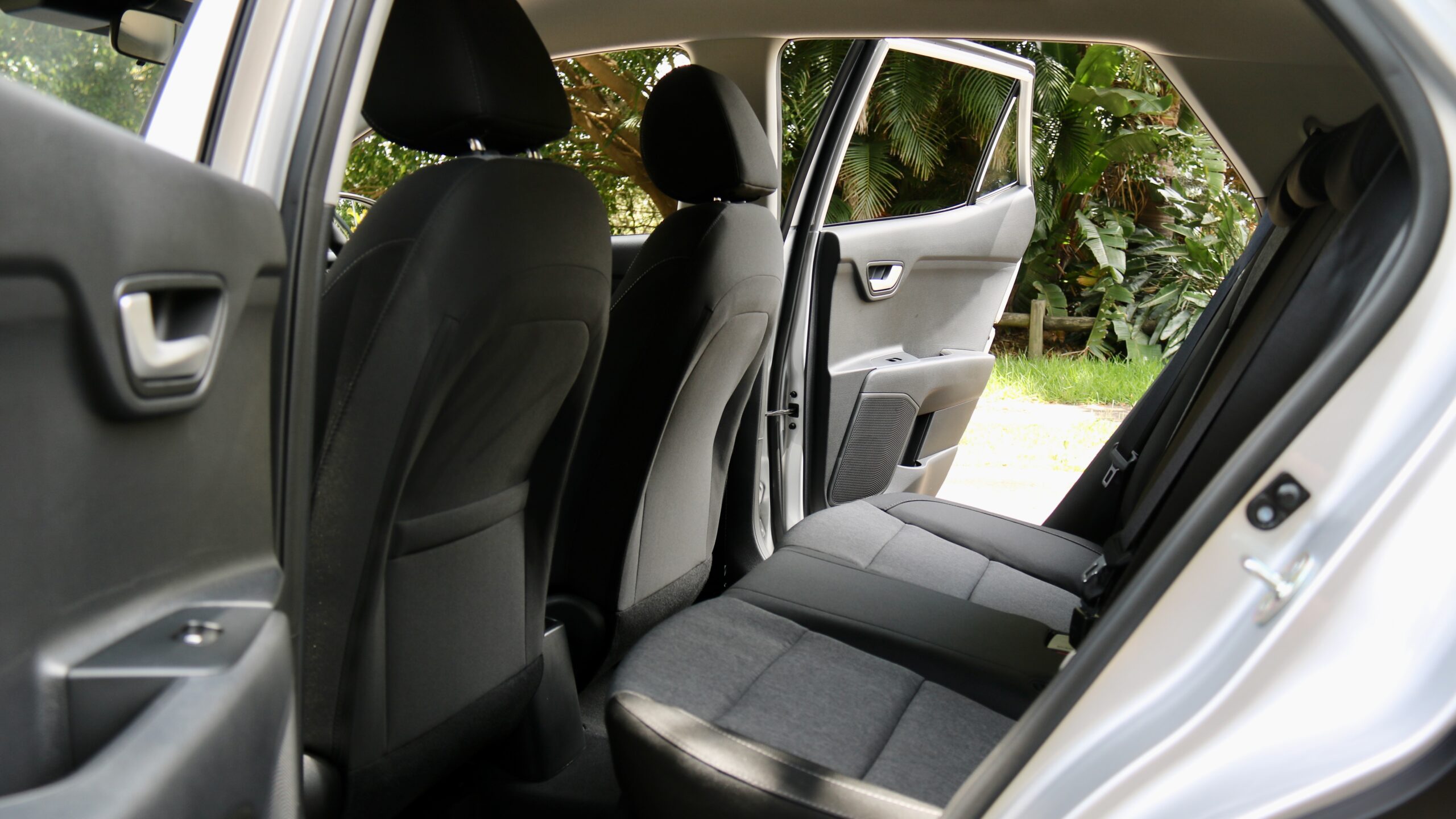
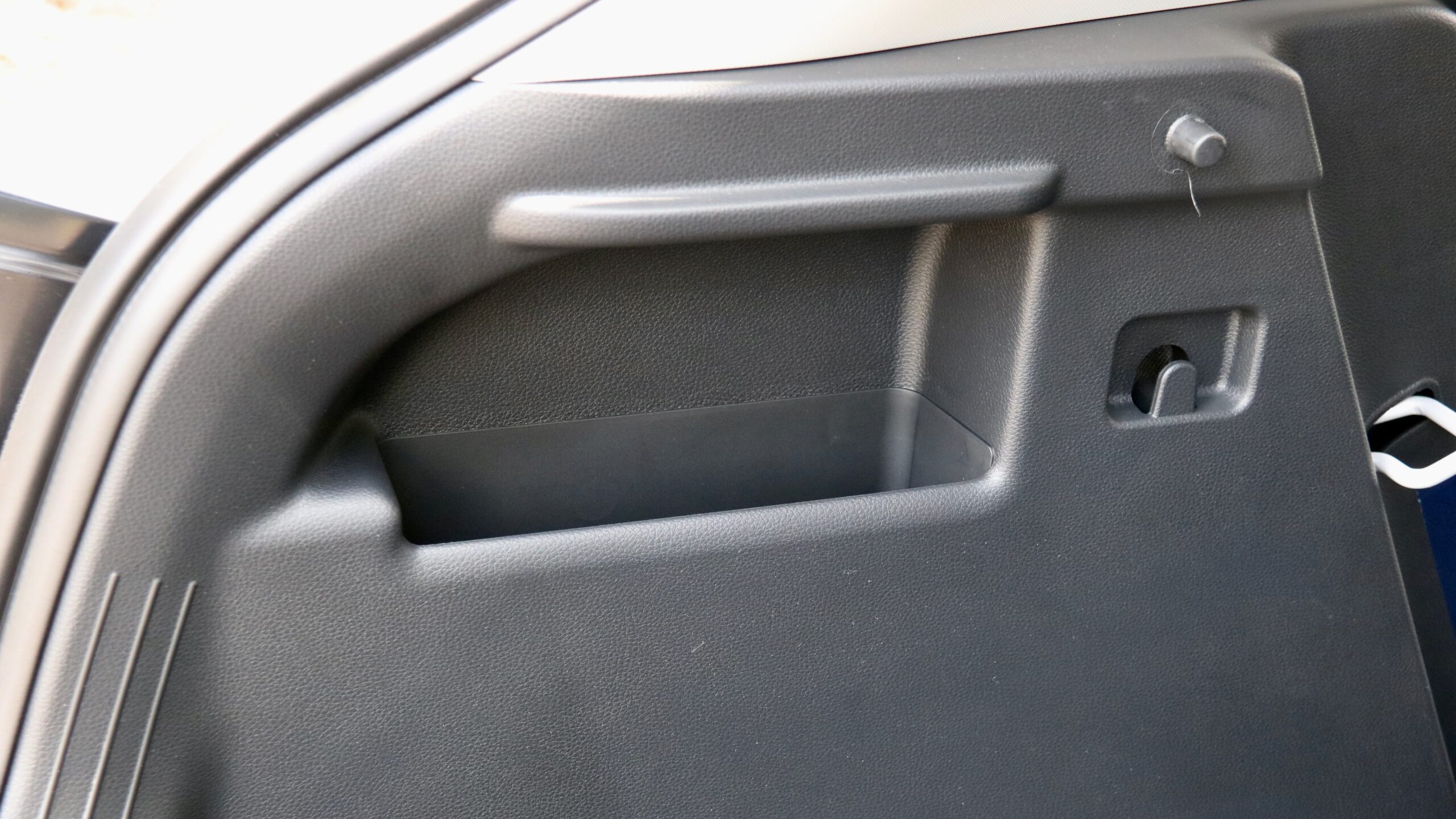
The boot of the 2023 Kia Stonic S is easy to open thanks to a light tailgate and measures a healthy 332-litres with the seats up and 1,132L with the seats folded. There are a few boot features like side storage and some hooks, while a space saver spare wheel lies underneath the boot floor. The boot floor is a long way down from the boot opening, however, and because Australia is denied the dual-level boot floor option, a big gap between the seats and boot floor exists when the rear seats are folded.
What warranty covers the 2023 Kia Stonic S?
Being a Kia, the Stonic comes with a seven-year/unlimited kilometre warranty. Roadside assistance is offered for a single year upfront, but at every scheduled service through a Kia dealership, a further 12 months is added for up to eight years in total. The Stonic’s warranty is superior to the CX-3 (five years with five years of roadside assistance) and the Venue too (also five years), though it’s possible to have lifetime roadside assistance if your Hyundai is serviced from new at a Hyundai dealership.
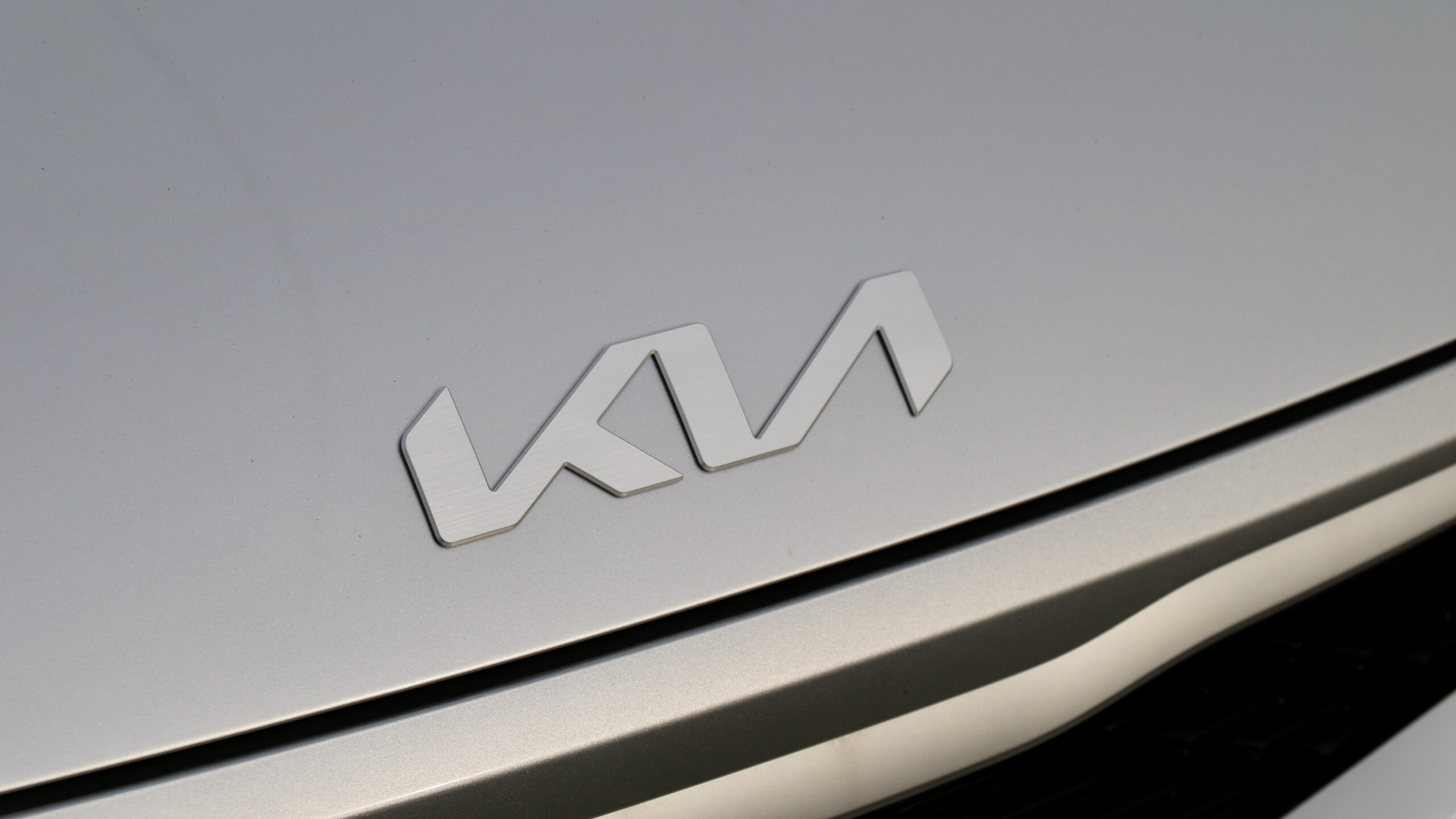
Servicing the 2023 Kia Stonic S occurs every 12 months or 15,000km, whichever comes first and the cost to service the Stonic over the span of five years or 75,000km is $1,981 ($396 per service), which fits in the middle of the Mazda and Hyundai. By comparison, the CX-3 and Venue cost $2,132 ($426 per service) and $1,817 ($363 per service) respectively to service over the same five years/75,000km.
Should I buy a 2023 Kia Stonic S?
The 2023 Kia Stonic S is an interesting option to the small SUV market and while it does have its place there are better options out there, but they cost money. For the coin, is the Kia Stonic S a good car? We certainly think so, though we would like to see the Stonic’s drivetrain improved as the engine fitted to the Stonic S just isn’t up to the task of being fitted to an SUV. It’s also quite thirsty as you have to thrash the engine and all around, this old, thirsty and all-round lacklustre engine needs replacement, in our opinion.
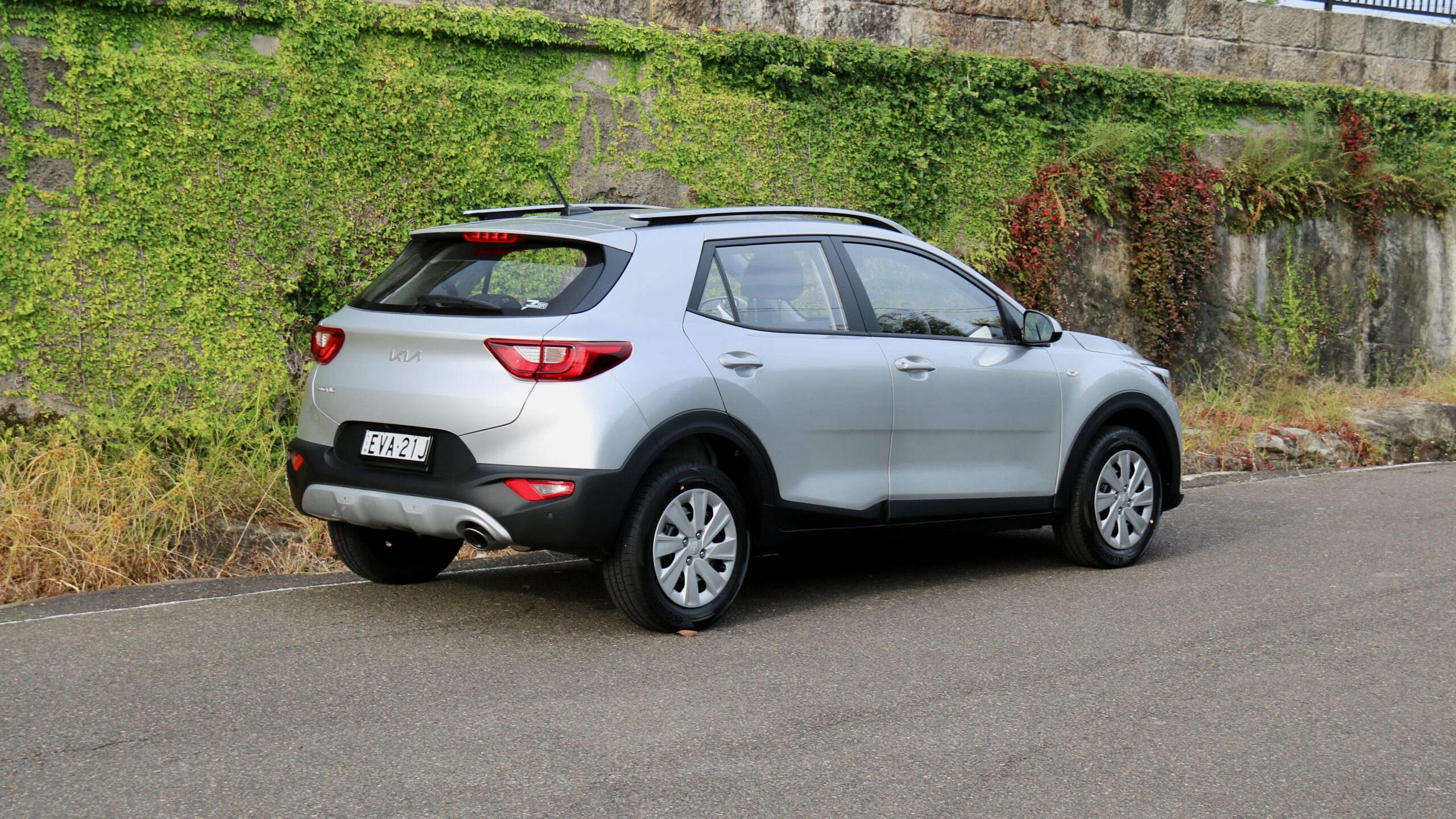
On the plus side, the Stonic’s interior is practical and reasonably well equipped, it has a good aftersales package and it has small enough dimensions that make it exceptionally easy to park and manoeuvre at slow speeds, but it’s also spacious enough for four adults to sit comfortably. For those buying the Stonic to get around the city and the suburbs, we think it is a great fit but introduce higher-speed driving into the equation and we think there are better options available.
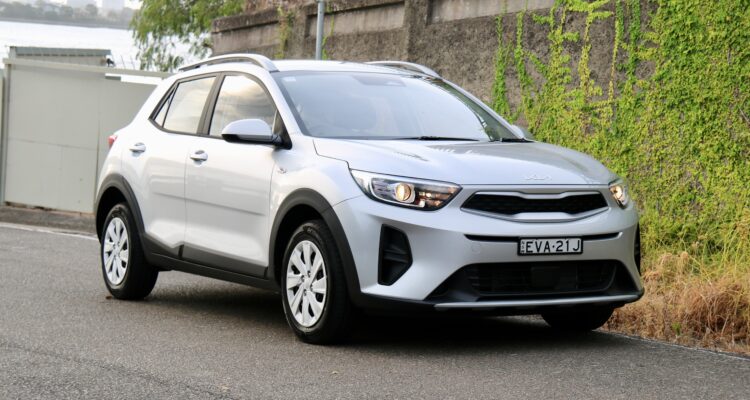
Leave a Reply